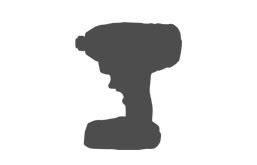Quick Select
Select specific models or manufacturers you want to see
Comparison tables not only compare products they organize product details into a normalized readable format. SpecLook does the hard work for you by finding all of the information from multiple sources, normalizing the values, and organizing all that data into easy to read tables. SpecLook tables allow you to search, sort, and filter, making it easier to find the details that are most important to you.
The comparison table on this page shows all products available for this type. You can use the filters section next to the table to narrow down the listings, OR you can select only the products and/or manufacturers you would like to see by selecting them here and then clicking the Customize Table button.
Most Popular
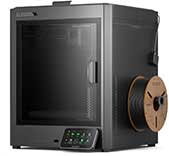
Others
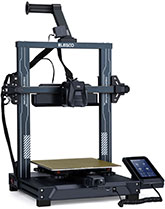
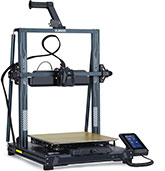
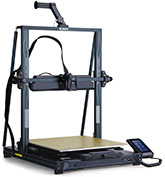
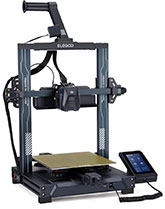
Most Popular
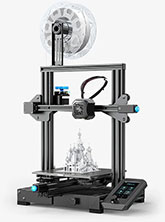
Others
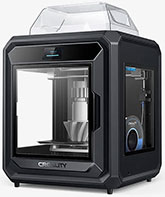
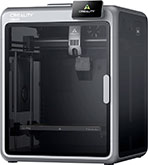
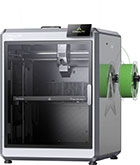

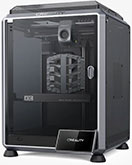
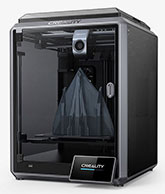
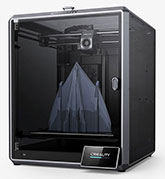
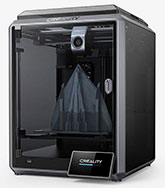
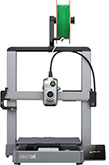
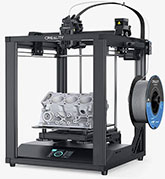
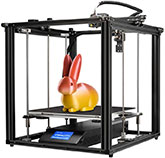
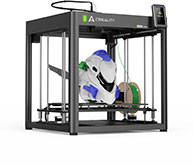

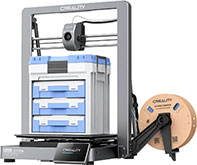
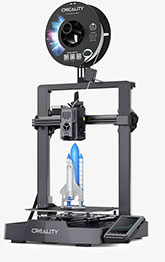
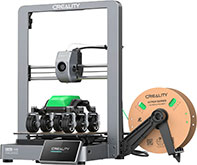
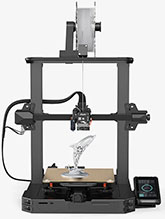
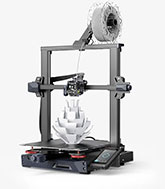
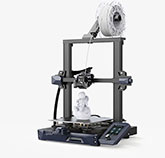
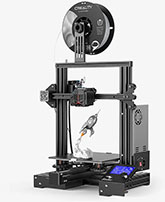
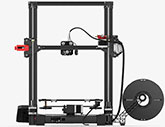
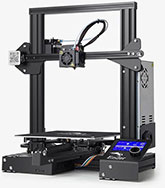
Most Popular

Others

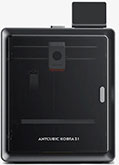
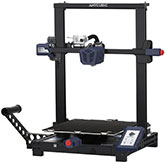
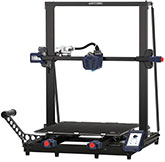
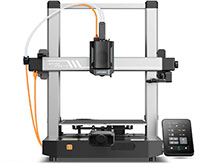
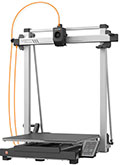
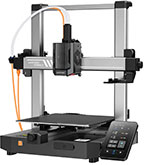

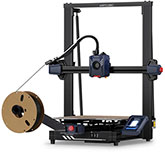
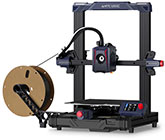

Most Popular
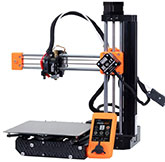
Others
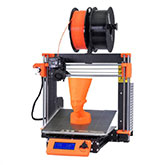
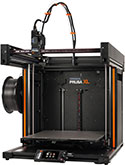
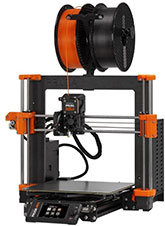
Most Popular
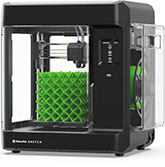
Others
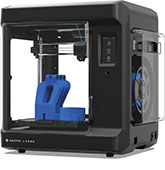
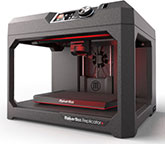
Most Popular
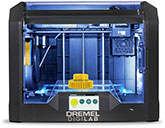
Others
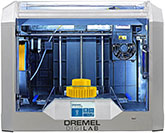
Most Popular
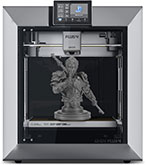
Others
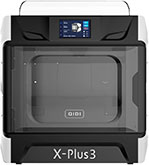
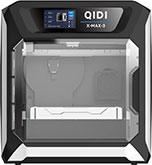
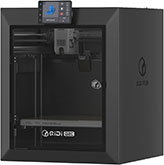
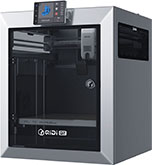
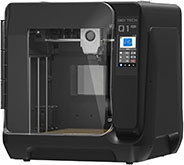
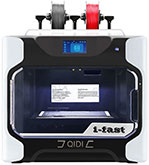
Most Popular
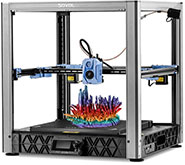
Others

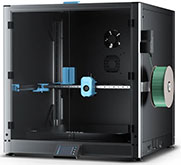
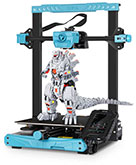
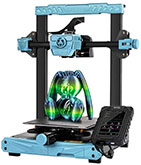
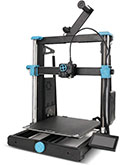
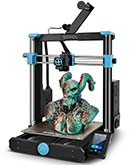
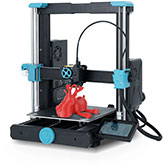
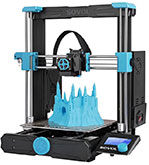
Most Popular
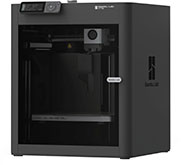
Others
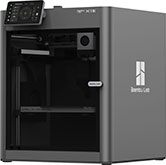
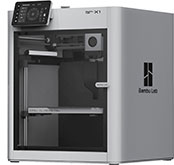
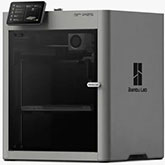
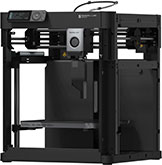
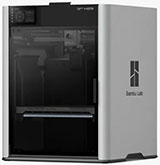
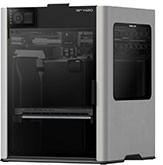
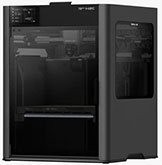
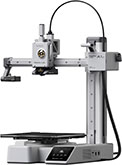
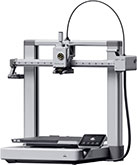
Need help choosing which product fits you best? Click Here
Comparison Awards
Awards are based on the comparison of details and specifications gathered for each product. SpecLook does not favor or promote any specific products or manufactures over any others.
Filters
You can also sort some of the columns by clicking the column titles.
FDM 3D Printers Comparison Table
Achieving Data Integrity & Accuracy
Nothing is more important than displaying the most accurate and up to date product information. Here are a few notes about our goal to achieve the most complete and accurate data set on the web.
Data Accuracy: All details and specifications in the below table are gathered directly from manufacturer websites, manufacturer released distribution/promotion materials, and product manuals. All rating data is updated as frequently as possible to reflect the most up to date and accurate values for the referenced source.
Data Integrity: Some specifications displayed in this table are manufacturer-defined recommendations based on the original equipment provided at the time of purchase. Certain details (such as layer heights, flow rate, and print accuracy) may be dependent on various things such as nozzle size/type and material. User modifications can allow the printer to achieve higher degrees of accuracy, and higher flow rates, which is why it is important to understand that certain values in this table are the basic recommendations and can sometimes be surpassed.
Data Completeness: Some properties (such as supported materials and slicing software) may not be fully encompassing, and only display those which are explicitly defined in manufacturer listings, manuals, and/or other support materials. This does not mean that the given printer is not capable of utilizing other materials or slicing software.
Impartial Highlighting & Awards: All highlights and awards are purely based on the comparison of details and specifications gathered for the products mentioned in the below table. Live calculations are performed every time the data set is loaded and new awards are displayed depending on the calculations.
- Most Popular Calculation: Based on total number of ratings and average rating value. A sigmoid function is used to smooth the average rating and a weighted average is calculated on the smoothed average rating.
- PopularityScore = (1.9 * (SmoothedAverageRatingValue * NumberOfRatings)) * (3.1 * (SmoothedAverageRatingValue / 5.0) )
- Largest Build Area:
- BuildAres= (Length * Width * Height)
Community Support & Reporting: All reports of inaccurate data are investigated and updated as soon as possible. If you believe any information displayed in this table is inaccurate or incomplete, and should be updated, please report your findings here.
(Hold Shift while scrolling to scroll horizontally)
| Product | Compare | Image | Category | Manufacturer | Model | Avg. Price Range | Links | Avg. Rating | Total Rating Count | Ratings | Release Date (Estimated) | Dimensions (HxWxD) | Weight | Power Type | Battery System | Motor Type | Amps | Battery Type | Voltage | Cord Length | Max Printhead Speed | Max Acceleration | Extruder Type | Printer Kinematics | Extruder Configuration | Nozzle Material (Provided) | Nozzle Max Temp | Default Nozzle Size | Flow Rate | Min Layer Height (w/ Default Nozzle) | Max Layer Height (w/ Default Nozzle) | Print Accuracy | Supported Materials (Not Fully Encompassing) | Multi-Filament | Supported Resins | Bed Leveling | Print Surface | Heated Bed | Bed Max Temp | Build Width | Build Depth | Build Height | Enclosure | Heated Chamber | Filament Detection | Input Shaping | Power Loss Recovery | Camera | WiFi | Ethernet | USB | Tech/Electrical | Firmware | Open Sourced FW | Slicing Software | Included | Extra Features | Certifications | Manufacturer Warranty | Price |
|---|---|---|---|---|---|---|---|---|---|---|---|---|---|---|---|---|---|---|---|---|---|---|---|---|---|---|---|---|---|---|---|---|---|---|---|---|---|---|---|---|---|---|---|---|---|---|---|---|---|---|---|---|---|---|---|---|---|---|---|---|
| ELEGOO Neptune 4 Max (Neptune 4 Max) |
 Image provided by: www.elegoo.com Image provided by: www.elegoo.com |
FDM - Fused Deposition Modeling | ELEGOO | Neptune 4 Max | 1 | Check Price at Amazon | 4.700 | 200 | ELEGOO4.7 / 5.0 (200) | September 2023 | 29.13 in x 24.88 in x 25.91 in(73.99 cm x 63.2 cm x 65.81 cm) | 40.124 | Corded | 0.000 | 500 | 8,000 | Direct | CoreXZ (i3-Style/Bed-slinger) - Cartesian XZ-Head Y-Bed | Single Nozzle | Brass | 300 | 0.40 | 0 | ±0.1mm | ABS Nylon/PA PETG PLA TPU |
No | Auto | PEI Magnetic Platform | Yes | 85 | 420 | 420 | 480 | No | No | Yes | Yes | Yes | No | Yes | Yes | Yes | Quad-Core ARM 64-bit 1.5G, 8GB ROM | Klipper | Yes | Cura ElegooSlicer |
Extended Hot End +60W Ceramic Heating Element + Brass Heating Block, Pressure Advance, All-Titanium Alloy Throat Pipe, Auxiliary & 121-Point Auto Leveling, Removable Capacitive Touchscreen, LED Light Bar, Nozzle LED Light, Filament Holder | 1 Year Limited | Check Price at Amazon | |||||||||||
| ELEGOO Neptune 4 Pro (Neptune 4 Pro) |
 Image provided by: www.elegoo.com Image provided by: www.elegoo.com |
FDM - Fused Deposition Modeling | ELEGOO | Neptune 4 Pro | 1 | Check Price at Amazon | 4.800 | 153 | ELEGOO4.8 / 5.0 (153) | June 2023 | 28.94 in x 18.7 in x 21.65 in(73.51 cm x 47.5 cm x 54.99 cm) | 19.621 | Corded | 0.000 | 500 | 8,000 | Direct | CoreXZ (i3-Style/Bed-slinger) - Cartesian XZ-Head Y-Bed | Single Nozzle | Brass | 300 | 0.40 | 0 | ±0.1mm | ABS Nylon/PA PETG PLA TPU |
No | Auto | PEI Magnetic Platform | Yes | 110 | 225 | 225 | 265 | No | No | Yes | Yes | Yes | No | Yes | Yes | Kilpper Motherboard, Quad-Core ARM 64-bit 1.5G | Klipper | Yes | Cura ElegooSlicer |
Extended Hot End, Pressure Advance, Copper-Titanium Bi-Metal Throat Pipe, Auxiliary & 121-Point Auto Leveling, Removable Capacitive Touchscreen, LED Light Bar, Nozzle LED Light, Filament Holder | 1 Year Limited | Check Price at Amazon | ||||||||||||
| ELEGOO Neptune 4 (Neptune 4) |
 Image provided by: www.elegoo.com Image provided by: www.elegoo.com |
FDM - Fused Deposition Modeling | ELEGOO | Neptune 4 | 1 | Check Price at Amazon | 4.900 | 59 | ELEGOO4.9 / 5.0 (59) | June 2023 | 20.28 in x 17.52 in x 18.7 in(51.51 cm x 44.5 cm x 47.5 cm) | 18.298 | Corded | 0.000 | 500 | 20,000 | Direct | CoreXZ (i3-Style/Bed-slinger) - Cartesian XZ-Head Y-Bed | Single Nozzle | Brass | 300 | 0.40 | 0 | ABS Nylon/PA PETG PLA TPU |
No | Auto | PEI Magnetic Platform | Yes | 110 | 225 | 225 | 265 | No | No | Yes | Yes | Yes | No | No | Yes | Yes | Quad-Core ARM 64-bit 1.5G, 8GB ROM | Klipper | Yes | Cura ElegooSlicer |
Pressure Advance, Copper-Titanium Bi-Metal Throat Pipe, Auxiliary & 121-Point Auto Leveling, Removable Capacitive Touchscreen, LED Light Bar, Nozzle LED Light, Filament Holder | 1 Year Limited | Check Price at Amazon | ||||||||||||
| ELEGOO Neptune 4 Plus (Neptune 4 Plus) |
 Image provided by: www.elegoo.com Image provided by: www.elegoo.com |
FDM - Fused Deposition Modeling | ELEGOO | Neptune 4 Plus | 1 | Check Price at Amazon | 4.800 | 182 | ELEGOO4.8 / 5.0 (182) | September 2023 | 25.2 in x 20.98 in x 29.53 in(64.01 cm x 53.29 cm x 75.01 cm) | 31.747 | Corded | 0.000 | 500 | 12,000 | Direct | CoreXZ (i3-Style/Bed-slinger) - Cartesian XZ-Head Y-Bed | Single Nozzle | 300 | 0.40 | 0 | ±0.1mm | ABS Nylon/PA PETG PLA TPU |
No | Auto | PEI Magnetic Platform | Yes | 100 | 320 | 320 | 385 | No | No | Yes | Yes | Yes | No | Yes | Yes | Yes | Quad-Core ARM 64-bit 1.5G, 8GB ROM | Klipper | Yes | Cura ElegooSlicer |
Extended Hot End +60W Ceramic Heating Element + Brass Heating Block, Pressure Advance, All-Titanium Alloy Throat Pipe, Auxiliary & 121-Point Auto Leveling, Removable Capacitive Touchscreen, LED Light Bar, Nozzle LED Light, Filament Holder | 1 Year Limited | Check Price at Amazon | ||||||||||||
| Creality K1 Speedy 3D Printer (K1 Speedy) |
 Image provided by: www.creality.com Image provided by: www.creality.com |
FDM - Fused Deposition Modeling | Creality | K1 Speedy | 1 | Check Price at Amazon | 4.320 | 151 | BH Photo Video3.5 / 5.0 (21) Creality4.45 / 5.0 (130) |
27.558 | Corded | 0.000 | 600 | 20,000 | Direct | CoreXY - Cartesian XY-Head Z-Bed | 300 | 0.40 | 0 | 0.100 | 0.350 | 100±0.1mm | ABS ASA Nylon/PA PA-CF PC PET PET-CF PETG PLA PLA-CF TPU |
Auto | Flexible build plate | Yes | 100 | 220 | 220 | 250 | Yes | Yes | Yes | Yes | No | Yes | Creality OS, Dual-Core 1.2GHz CPU, 350W Rated Power | Unibody Die-cast Aluminum Frame, Ceramic Heater, 4.3" Color Touch Screen, Lighting Kit, Sleep Mode,Power Loss Recovery, Remote Monitoring, Optional AI Camera, Optional AI LiDAR | Check Price at Amazon | |||||||||||||||||||||
| Creality K1 Max AI Fast 3D Printer (K1 Max) |
 Image provided by: www.creality.com Image provided by: www.creality.com |
FDM - Fused Deposition Modeling | Creality | K1 Max | 2 | Check Price at Amazon | 4.560 | 377 | Best Buy4.2 / 5.0 (116) BH Photo Video4.8 / 5.0 (22) Creality4.72 / 5.0 (239) |
39.683 | Corded | 0.000 | 600 | 20,000 | Direct | CoreXY - Cartesian XY-Head Z-Bed | 300 | 0.40 | 0 | 0.100 | 0.350 | 100±0.1mm | ABS ASA Nylon/PA PA-CF PC PET PET-CF PETG PLA PLA-CF TPU |
Auto | Flexible Build Plate | Yes | 100 | 300 | 300 | 300 | Yes | Yes | Yes | Yes | Yes | Yes | Creality OS, Dual-Core 1.2GHz CPU, 1000W Rated Power | Unibody Die-cast Aluminum Frame, Ceramic Heater, 4.3" Color Touch Screen, Lighting Kit, Sleep Mode, Power Loss Recovery, Real Time Monitoring with Smart Notifications, AI Camera, AI LiDAR with 1μm Resolution, Foreign Object Detection, Failure Detection, Motion Advance, Built-In Air Purifier | Check Price at Amazon | |||||||||||||||||||||
| Creality K1 (Flagship) (K1) |
 Image provided by: www.creality.com Image provided by: www.creality.com |
FDM - Fused Deposition Modeling | Creality | K1 | 1 | Check Price at Amazon | 4.390 | 343 | Best Buy4.3 / 5.0 (62) Creality4.44 / 5.0 (62) MicroCenter4.4 / 5.0 (219) |
April 2023 | 18.9 in x 13.98 in x 13.98 in(48.01 cm x 35.51 cm x 35.51 cm) | 27.558 | Corded | 0.000 | 600 | 20,000 | Direct | CoreXY - Cartesian XY-Head Z-Bed | Single Nozzle | 300 | 0.40 | 32 | 0.100 | 0.350 | 100±0.1mm | ABS ASA Nylon/PA PA-CF PC PET PET-CF PETG PLA PLA-CF TPU |
No | Auto | Flexible Build Plate | Yes | 100 | 220 | 220 | 250 | Yes | No | Yes (Runout) | Yes | Yes | Optional | Yes | No | Yes | 350W Rated Power | Creality OS | No | Creality Print Cura Prusa Slicer Simplify3D |
4.3" Color Touch Screen, Lighting Kit, Unibody Die-cast Frame, Ceramic Heater, Sleep Mode, Real Time Monitoring with Smart Notifications, Optional AI Camera, Optional AI LiDAR, Self Check Before Printing | Up to 1 Year Limited | Check Price at Amazon | ||||||||||
| Creality Sermoon D3 (Sermoon D3) |
 Image provided by: www.creality.com Image provided by: www.creality.com |
FDM - Fused Deposition Modeling | Creality | Sermoon D3 | 3 | Check Price at Amazon | 4.630 | 372 | Creality4.63 / 5.0 (372) | 99.208 | Corded | 0.000 | 250 | 0 | Direct | CoreXY - Cartesian XY-Head Z-Bed | 300 | 0.40 | 0 | 0.100 | 0.400 | ±0.1mm | ABS ASA PA66 PA66-CF PC PC-ABS PET-CF PETG PLA PLA-CF PLA-Wood TPC TPU95A |
Auto | PEI Spring Steel Print Sheets | Yes | 110 | 250 | 300 | 300 | Yes | Yes | Yes | Yes | Yes | Integrated 32-bit Silent Mainboard, 500W Rated Power | Industrial Grade Stability, Axis Assisted with Stainless Steel Linear Shafts of 60HRC Hardness, Bimetal Heat Break (Copper Alloy+Titanium Alloy), 4.3" Touch Screen, Power Loss Recovery, Air Filtration, Built-in 1080P HD Camera | Check Price at Amazon | ||||||||||||||||||||||
| Creality Ender-3 V3 SE 3D Printer (Ender-3 V3 SE) |
 Image provided by: www.creality.com Image provided by: www.creality.com |
FDM - Fused Deposition Modeling | Creality | Ender-3 V3 SE | 1 | Check Price at Amazon | 4.500 | 183 | Best Buy4.5 / 5.0 (11) BH Photo Video4.5 / 5.0 (82) Creality4.49 / 5.0 (90) |
16.182 | Corded | 0.000 | 250 | 2,500 | Direct | CoreXZ (i3-Style/Bed-slinger) - Cartesian XZ-Head Y-Bed | 260 | 0.40 | 0 | 0.100 | 0.350 | ±0.1mm | PETG PLA TPU95A |
Auto | PC Spring Steel | Yes | 100 | 220 | 220 | 250 | No | No | No | No | No | Yes - No Printing Support | 32-bit Silent Mainboard, 350W Rated Power | Auto Filament Loading, SD Card Slot, 3.2" Color Knob Screen, Power Loss Recovery | Check Price at Amazon | |||||||||||||||||||||
| Creality Ender-3 S1 Pro 3D Printer (Ender-3 S1 Pro) |
 Image provided by: www.creality.com Image provided by: www.creality.com |
FDM - Fused Deposition Modeling | Creality | Ender-3 S1 Pro | 1 | Check Price at Amazon | 4.450 | 175 | BH Photo Video5 / 5.0 (9) Creality4.46 / 5.0 (48) MicroCenter4.4 / 5.0 (118) |
19.180 | Corded | 0.000 | 150 | 1,500 | Direct | CoreXZ (i3-Style/Bed-slinger) - Cartesian XZ-Head Y-Bed | 300 | 0.40 | 0 | 0.100 | 0.350 | ±0.1mm | PA66 PETG PLA TPU |
Auto | PEI Spring Steel | Yes | 110 | 220 | 220 | 270 | Optional | Yes | No | No | No | Yes | 32-bit Silent Mainboard, 350W Rated Power | 4.3" Color Touch Screen, SD Card Slot, LED Light Bar, Optional Sonic Pad | Check Price at Amazon | |||||||||||||||||||||
| Creality Ender-3 S1 (Ender-3 S1) |
 Image provided by: www.creality.com Image provided by: www.creality.com |
FDM - Fused Deposition Modeling | Creality | Ender-3 S1 | 1 | Check Price at Amazon | 4.500 | 473 | Creality4.56 / 5.0 (34) MicroCenter4.5 / 5.0 (439) |
20.062 | Corded | 0.000 | 150 | 1,500 | Direct | CoreXZ (i3-Style/Bed-slinger) - Cartesian XZ-Head Y-Bed | 260 | 0.40 | 0 | 0.100 | 0.350 | ±0.1mm | ABS PETG PLA TPU |
Auto | PEI Spring Steel Magnetic | Yes | 100 | 220 | 220 | 270 | Optional | Yes | No | No | No | Yes | 32-bit Silent Mainboard, 350W Rated Power | 4.3" LCD Knob Screen, SD Card Slot, LED Light Bar, Resume Printing, Optional Sonic Pad | Check Price at Amazon | |||||||||||||||||||||
| Creality Ender-3 S1 Plus (Ender-3 S1 Plus) |
 Image provided by: www.creality.com Image provided by: www.creality.com |
FDM - Fused Deposition Modeling | Creality | Ender-3 S1 Plus | 1 | Check Price at Amazon | 4.760 | 17 | Creality4.76 / 5.0 (17) | 22.597 | Corded | 0.000 | 160 | 1,500 | Direct | CoreXZ (i3-Style/Bed-slinger) - Cartesian XZ-Head Y-Bed | 260 | 0.40 | 0 | 0.100 | 0.350 | 100±0.1mm | ABS PETG PLA TPU |
Auto | Spring Steel PC Magnetic | Yes | 100 | 300 | 300 | 300 | Optional | Yes | No | No | No | Yes | 32-bit Silent Mainboard, 350W Rated Power | 4.3" Color Touch Screen, SD Card Slot, Optional Sonic Pad | Check Price at Amazon | |||||||||||||||||||||
| Creality Ender-3 Max Neo 3D Printer (Ender-3 Max Neo) |
 Image provided by: www.creality.com Image provided by: www.creality.com |
FDM - Fused Deposition Modeling | Creality | Ender-3 Max Neo | 1 | Check Price at Amazon | 3.800 | 18 | MicroCenter3.8 / 5.0 (18) | 22.708 | Corded | 0.000 | 120 | 0 | Bowden | CoreXZ (i3-Style/Bed-slinger) - Cartesian XZ-Head Y-Bed | 260 | 0.40 | 0 | 0.050 | 0.350 | ±0.1mm | ABS PETG PLA Wood |
Auto | Carborundum Glass | Yes | 100 | 300 | 300 | 320 | No | Yes | No | No | No | Yes | 32-bit Silent Mainboard, 350W Rated Power | 4.3" Knob Screen, SD Card Slot, Resume Printing | Check Price at Amazon | |||||||||||||||||||||
| Creality Ender-3 (Ender-3) |
 Image provided by: www.creality.com Image provided by: www.creality.com |
FDM - Fused Deposition Modeling | Creality | Ender-3 | 1 | Check Price at Amazon | 4.320 | 25 | Creality4.32 / 5.0 (25) | 14.771 | Corded | 0.000 | 100 | 0 | Direct | CoreXZ (i3-Style/Bed-slinger) - Cartesian XZ-Head Y-Bed | 255 | 0.40 | 0 | 0.100 | 0.400 | ±0.1mm | ABS PLA TPU |
Manual | Magnetic Build Plate | Yes | 110 | 220 | 220 | 250 | Optional | No | No | No | No | Yes | SD Card Slot, Spool Holder | Check Price at Amazon | ||||||||||||||||||||||
| Creality Ender-3 V2 (Ender-3 V2) |
 Image provided by: www.creality.com Image provided by: www.creality.com |
FDM - Fused Deposition Modeling | Creality | Ender-3 V2 | 1 | Check Price at Amazon | 4.500 | 808 | Creality4.35 / 5.0 (17) MicroCenter4.5 / 5.0 (791) |
April 2020 | 24.41 in x 18.5 in x 18.7 in(62 cm x 46.99 cm x 47.5 cm) | 17.196 | Corded | 0.000 | 180 | 0 | Bowden | CoreXZ (i3-Style/Bed-slinger) - Cartesian XZ-Head Y-Bed | Single Nozzle | 260 | 0.40 | 0 | 0.100 | 0.400 | ±0.1mm | PETG PLA TPU |
No | Manual | Carborundum Glass | Yes | 100 | 220 | 220 | 250 | No | No | No | No | Yes | No | No | No | No | Silent Mainboard, 350W Rated Power | Marlin | Yes | Cura ElegooSlicer Simplify3D |
4.3" Knob Screen, SD Card Slot, Resume Printing | Up to 1 Year Limited | Check Price at Amazon | ||||||||||
| Creality Ender-3 Neo (Ender-3 Neo) |
 Image provided by: www.creality.com Image provided by: www.creality.com |
FDM - Fused Deposition Modeling | Creality | Ender-3 Neo | 1 | Check Price at Amazon | 0.000 | 0 | 15.432 | Corded | 0.000 | 120 | 0 | Bowden | CoreXZ (i3-Style/Bed-slinger) - Cartesian XZ-Head Y-Bed | 260 | 0.40 | 0 | 0.050 | 0.350 | ±0.1mm | ABS PETG PLA |
Auto | Carborundum Glass | Yes | 100 | 220 | 220 | 250 | No | No | No | No | No | Yes | 32-bit Silent Mainboard, 350W Rated Power | 12864 Mono Knob Screen, SD Card Slot, Resume Printing | Check Price at Amazon | ||||||||||||||||||||||
| Creality Ender-3 V3 KE (Ender-3 V3 KE) |
 Image provided by: www.creality.com Image provided by: www.creality.com |
FDM - Fused Deposition Modeling | Creality | Ender-3 V3 KE | 1 | Check Price at Amazon | 4.310 | 122 | Best Buy4.2 / 5.0 (47) BH Photo Video3.5 / 5.0 (14) Creality4.59 / 5.0 (61) |
17.196 | Corded | 0.000 | 500 | 8,000 | Direct | CoreXZ (i3-Style/Bed-slinger) - Cartesian XZ-Head Y-Bed | 300 | 0.40 | 0 | 0.100 | 0.350 | ±0.1mm | ABS ASA PETG PLA TPU95A |
Auto | PEI flexible build plate | Yes | 100 | 220 | 220 | 240 | No | Yes | Yes | Yes | No | Yes | Creality OS, 32-bit Silent Mainboard, 350W Rated Power | 4.3" Color Touch Screen, Ceramic Heater, Bimetal Heat Break (Copper Alloy+Titanium Alloy), Optional AI Camera, Optional Vibration Compensation Sensor, Power Loss Recovery | Check Price at Amazon | |||||||||||||||||||||
| Creality Ender-5 S1 (Ender-5 S1) |
 Image provided by: www.creality.com Image provided by: www.creality.com |
FDM - Fused Deposition Modeling | Creality | Ender-5 S1 | 1 | Check Price at Amazon | 4.140 | 99 | BH Photo Video4.5 / 5.0 (10) Creality4 / 5.0 (46) MicroCenter4.2 / 5.0 (43) |
26.676 | Corded | 0.000 | 250 | 2,000 | Direct | CoreXY - Cartesian XY-Head Z-Bed | 300 | 0.40 | 0 | 0.100 | 0.350 | ±0.1mm | ABS ASA HIPS PC PETG PLA TPU |
Auto | PC Spring Steel Sheet | Yes | 110 | 220 | 220 | 280 | No | Yes | No | Optional | No | Yes | 32-bit Silent Mainboard, 350W Rated Power | 4.3" Color Touch Screen, SD Card Slot, Titanium Alloy Heatbreak, Resume Printing | Check Price at Amazon | |||||||||||||||||||||
| Creality Ender-5 Plus (Ender-5 Plus) |
 Image provided by: www.creality.com Image provided by: www.creality.com |
FDM - Fused Deposition Modeling | Creality | Ender-5 Plus | 1 | Check Manufacturer Listing | 4.150 | 114 | Creality3.89 / 5.0 (19) MicroCenter4.2 / 5.0 (95) |
40.124 | Corded | 0.000 | 60 | 0 | Bowden | CoreXY - Cartesian XY-Head Z-Bed | 260 | 0.40 | 0 | 0.100 | 0.400 | ±0.1mm | ABS PLA TPU Wood |
Auto | Glass | Yes | 100 | 350 | 350 | 400 | No | Yes | No | No | No | Yes | 550W Rated Power | 4.3" Color Touch Screen, SD Card Slot, Resume Printing | Check Manufacturer Listing | |||||||||||||||||||||
| Anycubic Kobra 2 (Kobra 2) |
 Image provided by: www.anycubic.com Image provided by: www.anycubic.com |
FDM - Fused Deposition Modeling | Anycubic | Kobra 2 | 1 | Check Price at Amazon | 4.790 | 91 | Anycubic4.8 / 5.0 (85) MicroCenter4.7 / 5.0 (6) |
May 2023 | 19.14 in x 17.32 in x 17.13 in(48.62 cm x 43.99 cm x 43.51 cm) | 18.519 | Corded | 0.000 | 300 | 3,000 | Direct | CoreXZ (i3-Style/Bed-slinger) - Cartesian XZ-Head Y-Bed | Single Nozzle | Brass | 260 | 0.40 | 0 | 0.050 | 0.300 | X/Y/Z 0.0125mm/0.0125mm/0.0025mm (Positioning) | ABS PETG PLA TPU |
No | Auto | Magnetic Spring Steel Build Plate | Yes | 110 | 220 | 220 | 250 | No | No | Yes | Yes | Yes | No | No | No | Yes | 400W Rated Power | Anycubic Firmware | No | AnycubicSlicer | LeviQ 2.0 Auto-leveling, Smart Z-Offset, Easy Modular Assembly, MicroSD Card Slot, 4.3" Colored LCD Touchscreen, Power-Loss Recovery, Double Z-Axis Threaded Rods | 1 Year Limited | Check Price at Amazon | |||||||||
| Anycubic Kobra 2 Plus (Kobra 2 Plus) |
 Image provided by: www.anycubic.com Image provided by: www.anycubic.com |
FDM - Fused Deposition Modeling | Anycubic | Kobra 2 Plus | 1 | Check Price at Amazon | 4.750 | 108 | Anycubic4.8 / 5.0 (101) MicroCenter4.1 / 5.0 (7) |
September 2023 | 24.8 in x 23.82 in x 22.21 in(62.99 cm x 60.5 cm x 56.41 cm) | 28.660 | Corded | 0.000 | 500 | 10,000 | Direct | CoreXZ (i3-Style/Bed-slinger) - Cartesian XZ-Head Y-Bed | Single Nozzle | Brass | 260 | 0.40 | 0 | 0.050 | 0.300 | X/Y/Z 0.0125mm/0.0125mm/0.0025mm (Positioning) | ABS PETG PLA TPU |
No | Auto | PEI Magnetic Spring Steel | Yes | 90 | 320 | 320 | 400 | No | No | Yes | Yes | Yes | Compatible | No | No | Yes | 400W Power Supply, 32-bit Silent Motherboard, Cortex-A7 1.2 GHz Processor | Anycubic Firmware | No | AnycubicSlicer | 4.3" Colored LCD Touchscreen, LeviQ 2.0 Auto-leveling, Smart Z-Offset, Double Z-Axis Threaded Rods, Flow Control, Anycubic APP Control & Monitoring, X/Y Axis Belt Tensioner | 1 Year Limited | Check Price at Amazon | |||||||||
| Anycubic Kobra 2 Max (Kobra 2 Max) |
 Image provided by: www.anycubic.com Image provided by: www.anycubic.com |
FDM - Fused Deposition Modeling | Anycubic | Kobra 2 Max | 1 | Check Price at Amazon | 4.600 | 273 | Anycubic4.7 / 5.0 (242) MicroCenter3.8 / 5.0 (31) |
September 2023 | 29.13 in x 28.94 in x 25.2 in(73.99 cm x 73.51 cm x 64.01 cm) | 46.297 | Corded | 0.000 | 500 | 10,000 | Direct | CoreXZ (i3-Style/Bed-slinger) - Cartesian XZ-Head Y-Bed | Single Nozzle | Brass | 260 | 0.40 | 0 | 0.050 | 0.300 | X/Y/Z 0.0125mm/0.0125mm/0.0025mm (Positioning) | ABS PETG PLA TPU |
No | Auto | PEI Magnetic Spring Steel | Yes | 90 | 420 | 420 | 500 | No | No | Yes | Yes | Yes | Compatible | Yes | No | Yes | 500W Power Supply, 32-bit Silent Motherboard, Cortex-A7 1.2 GHz Processor | Anycubic Firmware | No | AnycubicSlicer | 4.3" Colored LCD Touchscreen, LeviQ 2.0 Auto-leveling, Smart Z-Offset, Double Z-Axis Threaded Rods, Flow Control, Anycubic APP Control & Monitoring, X/Y Axis Belt Tensioner | 1 Year Limited | Check Price at Amazon | |||||||||
| Anycubic Kobra 2 Pro (Kobra 2 Pro) |
 Image provided by: www.anycubic.com Image provided by: www.anycubic.com |
FDM - Fused Deposition Modeling | Anycubic | Kobra 2 Pro | 0 | Check Price at Amazon | 4.780 | 199 | Anycubic4.8 / 5.0 (191) MicroCenter4.4 / 5.0 (8) |
September 2023 | 19.13 in x 17.13 in x 18.23 in(48.59 cm x 43.51 cm x 46.3 cm) | 18.519 | Corded | 0.000 | 500 | 20,000 | Direct | CoreXZ (i3-Style/Bed-slinger) - Cartesian XZ-Head Y-Bed | Single Nozzle | Brass | 260 | 0.40 | 0 | 0.050 | 0.300 | X/Y/Z 0.0125mm/0.0125mm/0.0025mm (Positioning) | ABS PETG PLA TPU |
No | Auto | PEI Magnetic Spring Steel | Yes | 110 | 220 | 220 | 250 | No | No | Yes | Yes | Yes | Compatible | Yes | No | Yes | 400W Power Supply, 32-bit Silent Motherboard, Cortex-A7 1.2 GHz Processor | Anycubic Firmware | No | AnycubicSlicer | 4.3" Colored Touchscreen, LeviQ 2.0 Auto-leveling, Smart Z-Offset, Double Z-Axis Threaded Rods, Flow Control, Anycubic APP Control & Monitoring, X/Y Axis Belt Tensioner | 1 Year Limited | Check Price at Amazon | |||||||||
| Anycubic Kobra 2 Neo (Kobra 2 Neo) |
 Image provided by: www.anycubic.com Image provided by: www.anycubic.com |
FDM - Fused Deposition Modeling | Anycubic | Kobra 2 Neo | 1 | Check Price at Amazon | 4.610 | 134 | Anycubic4.7 / 5.0 (105) MicroCenter4.3 / 5.0 (29) |
September 2023 | 19.1 in x 17.32 in x 17.32 in(48.51 cm x 43.99 cm x 43.99 cm) | 16.094 | Corded | 0.000 | 250 | 2,500 | Direct | CoreXZ (i3-Style/Bed-slinger) - Cartesian XZ-Head Y-Bed | Single Nozzle | Brass | 260 | 0.40 | 0 | 0.050 | 0.300 | X/Y/Z 0.0125mm/0.0125mm/0.0025mm (Positioning) | ABS PETG PLA TPU |
No | Auto | PEl Magnetic Spring Steel | Yes | 110 | 220 | 220 | 250 | No | No | Optional | Yes | Yes | No | No | No | No | 400W Rated Power | Anycubic Firmware | No | AnycubicSlicer | 2.4" Knob Control LCD Screen, MicroSD Card Slot, LeviQ 2.0 Auto-leveling, Smart Z-Offset, Single Z-Axis Threaded Rod | 1 Year Limited | Check Price at Amazon | |||||||||
| Anycubic Kobra Max (Kobra Max) |
 Image provided by: www.anycubic.com Image provided by: www.anycubic.com |
FDM - Fused Deposition Modeling | Anycubic | Kobra Max | 0 | Check Price at Amazon | 4.700 | 69 | Anycubic4.7 / 5.0 (69) | 35.274 | Corded | 0.000 | 180 | 0 | Bowden | CoreXZ (i3-Style/Bed-slinger) - Cartesian XZ-Head Y-Bed | 260 | 0.40 | 0 | 0.050 | 0.300 | ±0.1mm | ABS HIPS PETG PLA TPU Wood |
Auto | Carborundum Glass | Yes | 90 | 400 | 400 | 450 | No | Yes | No | No | No | No | 500W Rated Power | 4.3" Colored LCD Touchscreen, MicroSD Card Slot, LeviQ 2.0 Auto-leveling, Double Z-Axis Threaded Rods, X/Y Axis Belt Tensioner | Check Price at Amazon | |||||||||||||||||||||
| Anycubic Kobra Plus (Kobra Plus) |
 Image provided by: www.anycubic.com Image provided by: www.anycubic.com |
FDM - Fused Deposition Modeling | Anycubic | Kobra Plus | 1 | Check Price at Amazon | 4.900 | 25 | Anycubic4.9 / 5.0 (25) | 24.251 | Corded | 0.000 | 180 | 0 | Bowden | CoreXZ (i3-Style/Bed-slinger) - Cartesian XZ-Head Y-Bed | 260 | 0.40 | 0 | 0.050 | 0.300 | X/Y/Z 0.0125mm/0.0125mm/0.0025mm (Positioning) | ABS HIPS PETG PLA TPU Wood |
Auto | Carborundum Glass | Yes | 100 | 300 | 300 | 350 | No | Yes | No | No | No | No | 350W Rated Power | 4.3" LCD Touchscreen, MicroSD Card Slot, LeviQ 2.0 Auto-leveling, Double Z-Axis Threaded Rods, X/Y Axis Belt Tensioner, Power-Loss Recovery, Integrated Tool Drawer | Check Price at Amazon | |||||||||||||||||||||
| Prusa MK4S (MK4S) |
 Image provided by: www.prusa3d.com Image provided by: www.prusa3d.com |
FDM - Fused Deposition Modeling | Prusa | MK4S | 2 | Check Kit Price at Amazon | 4.510 | 125 | PrintedSolid5 / 5.0 (20) Prusa4.42 / 5.0 (105) |
16.755 | Corded | 0.000 | 0 | 0 | Direct | CoreXZ (i3-Style/Bed-slinger) - Cartesian XZ-Head Y-Bed | 300 | 0.40 | 0 | 0.050 | 0.300 | ASA CPE Flex Nylon/PA PC PETG PLA PP PVA PVB nGen |
Auto | PEI Magnetic Spring Steel Print Sheets | Yes | 120 | 250 | 210 | 220 | Optional | Yes | Yes | Yes | Yes | Yes | Custom 32-bit xBuddy electronics with STM32, 240W PSU | Loadcell Sensor, Nextruder with Breakout Board, Remote Printing, Customizable UI, Color LCD Screen, Quick-Swap Nozzles | Check Kit Price at Amazon | ||||||||||||||||||||||
| Prusa i3 MK3S+ (i3 MK3S+) |
 Image provided by: www.prusa3d.com Image provided by: www.prusa3d.com |
FDM - Fused Deposition Modeling | Prusa | i3 MK3S+ | 2 | Check Price at Amazon | 4.800 | 50 | PrintedSolid4.8 / 5.0 (49) Prusa5 / 5.0 (1) |
15.432 | Corded | 0.000 | 200 | 0 | Direct | CoreXZ (i3-Style/Bed-slinger) - Cartesian XZ-Head Y-Bed | 300 | 0.40 | 0 | 0.050 | 0.350 | ABS ASA CPE Carbon Filled Flex HIPS Nylon/PA PC PETG PLA PP PVA PVB Wood nGen |
Auto | PEI Spring Steel Print Sheets | Yes | 120 | 250 | 210 | 210 | No | Yes | No | No | No | Yes | Custom Delta PSU with Hardware-Based Power Panic | SuperPinda Probe, Mesh Bed Leveling, Power Loss Recovery (Power Panic), SD Card Slot, LCD Panel, E3D V6 Hotend | Check Price at Amazon | ||||||||||||||||||||||
| Prusa MINI+ (MINI+) |
 Image provided by: www.prusa3d.com Image provided by: www.prusa3d.com |
FDM - Fused Deposition Modeling | Prusa | MINI+ | 1 | Check Price at Amazon | 4.290 | 184 | PrintedSolid5 / 5.0 (21) Prusa4.2 / 5.0 (163) |
10.692 | Corded | 0.000 | 200 | 0 | Bowden | CoreXZ (i3-Style/Bed-slinger) - Cartesian XZ-Head Y-Bed | 280 | 0.40 | 0 | 0.050 | 0.250 | ABS ASA CPE Flex HIPS Nylon/PA PC PETG PLA PP PVA PVB Wood nGen |
Auto | Magnetic Spring Steel Print Sheets | Yes | 100 | 180 | 180 | 180 | No | Optional | Yes | Optional | Yes | Yes | Custom 32-bit xBuddy electronics with STM32 | SuperPinda Probe, Spool Holder, LCD Panel | Check Price at Amazon | ||||||||||||||||||||||
| MakerBot Sketch 3D printer (Sketch Standard) |
 Image provided by: www.makerbot.com Image provided by: www.makerbot.com |
FDM - Fused Deposition Modeling | MakerBot | Sketch Standard | 3 | Check Price at Amazon | 3.000 | 4 | Best Buy3 / 5.0 (4) | 26.015 | Corded | 0.000 | 100 | 0 | Direct | CoreXY - Cartesian XY-Head Z-Bed | 0 | 0.40 | 0 | 0.100 | 0.400 | MakerBot Tough PLA |
Auto | Removable Flexible Grip Surface | Yes | 100 | 150 | 150 | 150 | Yes | Yes | No | Yes | Yes | Yes | Particulate Filter, On-Board 2 Megapixel Camera, 2.8" Color Touch Screen, Cloud-Based Software, Replaceable Extruder | Check Price at Amazon | |||||||||||||||||||||||
| MakerBot Sketch Large 3D printer (Sketch Large) |
 Image provided by: www.makerbot.com Image provided by: www.makerbot.com |
FDM - Fused Deposition Modeling | MakerBot | Sketch Large | 4 | Check Price at Amazon | 0.000 | 0 | 51.147 | Corded | 0.000 | 150 | 0 | Direct | CoreXY - Cartesian XY-Head Z-Bed | 0 | 0.40 | 0 | 0.100 | 0.400 | MakerBot Tough PLA |
Auto | Removable Flexible Grip Surface | Yes | 110 | 220 | 200 | 250 | Yes | Yes | No | Yes | Yes | Yes | Particulate Filter, On-Board 2 Megapixel Camera, 2.8" Color Touch Screen, Cloud-Based Software, Replaceable Extruder | Check Price at Amazon | ||||||||||||||||||||||||
| MakerBot REPLICATOR+ (Replicator+, MP07825) |
 Image provided by: www.makerbot.com Image provided by: www.makerbot.com |
FDM - Fused Deposition Modeling | MakerBot | Replicator+ | 0 | Check Price at Amazon | 0.000 | 0 | 40.345 | Corded | 0.000 | 0 | 0 | Direct | CoreXY - Cartesian XY-Head Z-Bed | 255 | 0.40 | 0 | 0.100 | 0.300 | MakerBot Tough PLA Wood |
Manual | Polycarbonate Film | No | 0 | 295 | 195 | 165 | No | Yes | No | Yes | Yes | Yes | 100W Rated Power | On-Board Camera, MakerBot Mobile App Compatible | Check Price at Amazon | |||||||||||||||||||||||
| Dremel DigiLab 3D45 (DigiLab 3D45, 3D45-01) |
 Image provided by: www.3pitech.com Image provided by: www.3pitech.com |
FDM - Fused Deposition Modeling | Dremel | DigiLab 3D45 | 5 | Check Price at Amazon | 4.430 | 499 | BH Photo Video5 / 5.0 (25) Dremel4.4 / 5.0 (474) |
36.300 | Corded | 0.000 | 0 | 0 | Direct | CoreXY - Cartesian XY-Head Z-Bed | 280 | 0.40 | 0 | 0.050 | 0.340 | +-0.05mm | ABS ECO-ABS Nylon/PA PETG PLA |
Semi-Auto | Removeable Glass | Yes | 100 | 255 | 155 | 170 | Yes | Yes | No | Yes | Yes | Yes | Dual 1GHz Processors | On-Board Camera, 4.5" Color Touch Screen, Cloud-Based Software, Air Filter, RFID Filament Tagging | Check Price at Amazon | |||||||||||||||||||||
| Dremel DigiLab 3D40-FLX (DigiLab 3D40-FLX, 3D40-FLX-01) |
 Image provided by: www.3pitech.com Image provided by: www.3pitech.com |
FDM - Fused Deposition Modeling | Dremel | DigiLab 3D40-FLX | 3 | Check Price at Amazon | 4.700 | 116 | BH Photo Video5 / 5.0 (1) Dremel4.7 / 5.0 (115) |
35.000 | Corded | 0.000 | 0 | 0 | Direct | CoreXY - Cartesian XY-Head Z-Bed | 230 | 0.40 | 0 | 0.050 | 0.340 | PLA | Semi-Auto | Flexible Build Plate | Yes | 0 | 255 | 155 | 170 | Yes | Yes | No | Yes | Yes | Yes | 1GHz Processors | 3.5" Color Touch Screen, Cloud-Based Software | Check Price at Amazon | ||||||||||||||||||||||
| Creality K1C (K1C) |
 Image provided by: www.creality.com Image provided by: www.creality.com |
FDM - Fused Deposition Modeling | Creality | K1C | 1 | Check Price at Amazon | 4.560 | 175 | Best Buy4.4 / 5.0 (25) Creality4.63 / 5.0 (97) MicroCenter4.5 / 5.0 (53) |
January 2024 | 19 in x 14 in x 14 in(48.26 cm x 35.56 cm x 35.56 cm) | 35.300 | Corded | 0.000 | 600 | 20,000 | Direct | CoreXY - Cartesian XY-Head Z-Bed | Single Nozzle | Tri-metal | 300 | 0.40 | 0 | 0.100 | 0.350 | 100±0.1mm | ABS ASA Carbon Filled Nylon/PA PA-CF PC PET PET-CF PETG PLA PLA-CF TPU |
No | Auto | PEI Flexible Build Plate | Yes | 100 | 220 | 220 | 250 | Yes | No | Yes | Yes | Yes | Yes | Yes | No | Yes | 350W Rated Power | Creality OS (Based on Klipper) | No | Creality Print Cura |
4.3" Color Touch Screen, Quick-Swap Nozzle, Active Carbon Filter, Silent Mode, Partial Failure Exclusion, Clog-free Direct Drive Extruder, Observant Al Camera, Spaghetti Detection, Foreign Object Detection, Time-Lapse Filming, Remote Monitoring | 1 Year Limited | Check Price at Amazon | |||||||||
| Creality K2 Plus (K2 Plus) |
 Image provided by: www.creality.com Image provided by: www.creality.com |
FDM - Fused Deposition Modeling | Creality | K2 Plus | 3 | Check Kit Price at Amazon | 4.640 | 384 | BH Photo Video5 / 5.0 (12) Creality4.63 / 5.0 (372) |
November 2024 | 36.06 in x 20.28 in x 19.49 in(91.59 cm x 51.51 cm x 49.5 cm) | 77.160 | Corded | 0.000 | 600 | 30,000 | Direct | CoreXY - Cartesian XY-Head Z-Bed | Single Nozzle | Tri-metal | 350 | 0.40 | 0 | 0.050 | 0.300 | 100mm±0.1mm | ABS ASA Hyper-PLA PA-CF PET PETG PLA PLA-CF PPA-CF |
Yes (With CFS) | Auto | Flexible Build Plate | Yes | 120 | 350 | 350 | 350 | Yes | Max 60°C | Yes (Runout/Tangle) | Yes | Yes | Yes | Yes | Yes | Yes | 1200W Rated Power, 32G EMMC, 2.4GHz/5GHz WiFi | Creality OS | No | Creality Cloud Creality Print |
4.3" Color Touch Screen, Dual AI Cameras for Monitoring & Calibration, Air Purifier, Built-in RFID Tag Reader, Lighting Kit, Active Belt Tensioning | 1 Year Limited | Check Kit Price at Amazon | |||||||||
| QiDi Tech Plus 4 (Plus4) |
 Image provided by: www.qidi3d.com Image provided by: www.qidi3d.com |
FDM - Fused Deposition Modeling | QiDi Tech | Plus4 | 2 | Check Price at Amazon | 4.900 | 399 | QiDi Tech4.9 / 5.0 (399) | September 2024 | 21.65 in x 19.88 in x 19.17 in (54.99 cm x 50.5 cm x 48.69 cm) |
59.530 | Corded | 0.000 | 600 | 20,000 | Direct | CoreXY - Cartesian XY-Head Z-Bed | Single Nozzle | Bimetal | 370 | 0.40 | 0 | 0.080 | 0.320 | ABS ASA HIPS PA PA-CF/GF PC PET-CF/GF PETG PLA PPA-CF/GF PPS-CF PVA TPU |
Compatible | Auto | Dual-Sided Textured PEI Plate | Yes | 120 | 305 | 305 | 280 | Yes | 2nd Gen Up to 65° C | Yes (Runout/Tangle) | Yes | Yes | Yes | Yes | Yes | Yes | 450W Rated Power +400W (Chamber Heating), 32G EMMC Storage, Dual-Core Cortex-M4 Motion Controller, Quad-Core 1.5GHz Cortex-A53 64-bit Processor, Dual-Core Cortex-M0+ Extruder Independent Processor | Klipper | Yes | Cura Orca Slicer Prusa Slicer QiDi Studio |
5" HD Touch Screen, Dual-layer Insulated Chamber with Air Circulation, 1080p Camera,Compatible with QiDi Box,Compatible with QiDi Mobile Application | 1 Year Limited (Not Covering Consumable Parts) | Check Price at Amazon | ||||||||||
| Sovol SV06 ACE (SV06 ACE) |
 Image provided by: www.sovol3d.com Image provided by: www.sovol3d.com |
FDM - Fused Deposition Modeling | Sovol | SV06 ACE | 1 | Check Price at Amazon | 4.640 | 11 | Sovol4.64 / 5.0 (11) | October 2024 | 18 in x 16 in x 17 in (45.72 cm x 40.64 cm x 43.18 cm) |
19.800 | Corded | 0.000 | 600 | 20,000 | Direct | CoreXZ (i3-Style/Bed-slinger) - Cartesian XZ-Head Y-Bed | Single Nozzle | Brass | 300 | 0.40 | 0 | ±0.1mm | PETG PLA PVA TPU |
Auto | Double-Sided Textured PEI Plate | Yes | 100 | 220 | 220 | 250 | No | No | Yes | Yes | No | Yes | Yes | No | Yes | 360W Rated Power, 64-bit Processor, 2.4G WIFI | Klipper | Yes | Cura Orca Slicer Prusa Slicer |
4.3" Capacitive Touchscreen, Compatible with Obico App, OTA Updates | 1 Year Limited | Check Price at Amazon | ||||||||||||
| Bambu Lab X1C (X1C) |
 Image provided by: us.store.bambulab.com Image provided by: us.store.bambulab.com |
FDM - Fused Deposition Modeling | Bambu Lab | X1C | 3 | Check Price at 3D Universe | 4.800 | 254 | Best Buy4.8 / 5.0 (254) | 2022 | 18 in x 15.32 in x 15.32 in(45.72 cm x 38.91 cm x 38.91 cm) | 49.160 | Corded | 0.000 | 500 | 20,000 | Direct | CoreXY - Cartesian XY-Head Z-Bed | Single Nozzle | Hardened Steel | 300 | 0.40 | 32 | 0.080 | 0.280 | ABS ASA Carbon Fiber PA PC PET PETG PLA TPU |
Yes (With AMS) | Auto | Bambu Textured PEI Plate or Bambu Cool Plate (Pre-installed, Random, Both compatible with Micro Lidar) | Yes | 110 | 256 | 256 | 256 | Yes | No | Yes | Yes | Yes | Yes | Yes | No | Yes | 1000W Max Power (220V), 350W Max Power (110V), Quad ARM A7 1.2 GHz (Application Processor), Dual-Core Cortex M4 (Motion Controller), 4 GB EMMC | Bambu Firmware | No | Bambu Studio Cura Prusa Slicer |
5" Touchscreen, Activated Carbon Filter, LED Lighting, Bambu-Bus Connectivity, Micro SD Card Reader, Spaghetti Failure Detection, AI Inspected First Layer, AMS 2 Pro Compatible | 1 Year Limited | Check Price at 3D Universe | ||||||||||
| Bambu Lab H2D (H2D) |
 Image provided by: us.store.bambulab.com Image provided by: us.store.bambulab.com |
FDM - Fused Deposition Modeling | Bambu Lab | H2D | 4 | Check Manufacturer Listing | 0.000 | 0 | March 2025 | 24.65 in x 20.24 in x 19.37 in(62.61 cm x 51.41 cm x 49.2 cm) | 68.340 | Corded | 0.000 | 1,000 | 20,000 | Direct | CoreXY - Cartesian XY-Head Z-Bed | Dual Nozzle | Hardened Steel | 350 | 0.40 | 40 | ±0.05mm | ABS ASA Carbon Fiber PA PC PET PETG PLA PLA-CF PPA-CF/GF PPS PPS-CF PVA TPU |
Yes (With AMS) | Auto | Textured PEI Plate or Smooth PEI Plate | Yes | 120 | 350 | 320 | 325 | Yes | Max 65°C | Yes (Runout/Tangle) | Yes | Yes | Yes | Yes | Yes | Yes | 2200W Max Power (220V), 1320W Max Power (110V), 8 GB EMMC, 2.4GHz/5GHz WiFi | Bambu Firmware | No | Bambu Studio Cura Prusa Slicer |
5" Touchscreen, Air Filtration (G3, H12, Coconut Shell Carbon Filter, VOC & Maticulate Matter Filtration), LED Lighting, Bambu-Bus Connectivity, Mobile App Compatible, Nozzle Camera, Optional 10W/40W Laser and Cutting Module | 1 Year Limited (2 Year Limited for EU, Switzerland, Norway and Iceland) | Check Manufacturer Listing | ||||||||||||
| Bambu Lab X1E (X1E) |
 Image provided by: us.store.bambulab.com Image provided by: us.store.bambulab.com |
FDM - Fused Deposition Modeling | Bambu Lab | X1E | 5 | Check Manufacturer Listing | 0.000 | 0 | October 2023 | 18 in x 15.32 in x 15.32 in(45.72 cm x 38.91 cm x 38.91 cm) | 31.150 | Corded | 0.000 | 500 | 20,000 | Direct | CoreXY - Cartesian XY-Head Z-Bed | Single Nozzle | Hardened Steel | 320 | 0.40 | 32 | ABS ASA Carbon Fiber PA PC PET PETG PLA PPA-CF PPA-CF/GF PPS PPS-CF PPS-CF PVA TPU |
Yes (With AMS) | Auto | Bambu Textured PEI Plate | Yes | 120 | 256 | 256 | 256 | Yes | Max 60°C | Yes (Runout) | Yes | Yes | Yes | Yes | Yes | Yes | 1400W Max Power (220V), 750W Max Power (110V), Quad ARM A7 1.2 GHz (Application Processor), Dual-Core Cortex M4 (Motion Controller), 4 GB EMMC, Secure Network Connection, WPA2-Enterprise Authentication | Bambu Firmware | No | Bambu Studio Cura Prusa Slicer |
5" Touchscreen, Air Filtration (G3, H12, Coconut Shell Carbon Filter, VOC & Maticulate Matter Filtration), LED Lighting, Bambu-Bus Connectivity, Micro SD Card Reader, Spaghetti Failure Detection, AI Inspected First Layer, LAN Only Mode, Network Kill Switch, Removable Network Module | 1 Year Limited (2 Year Limited for EU, Switzerland, Norway and Iceland) | Check Manufacturer Listing | |||||||||||||
| Bambu Lab P1S (P1S) |
 Image provided by: us.store.bambulab.com Image provided by: us.store.bambulab.com |
FDM - Fused Deposition Modeling | Bambu Lab | P1S | 1 | Check Price at Amazon | 4.800 | 385 | MicroCenter4.8 / 5.0 (385) | July 2023 | 18.03 in x 15.32 in x 15.32 in(45.8 cm x 38.91 cm x 38.91 cm) | 38.800 | Corded | 0.000 | 500 | 20,000 | Direct | CoreXY - Cartesian XY-Head Z-Bed | Single Nozzle | Stainless Steel | 300 | 0.40 | 32 | ABS ASA PA PC PET PETG PLA PVA TPU |
Yes (With AMS) | Auto | Bambu Dual-Sided Textured PEI Plate | Yes | 100 | 256 | 256 | 256 | Yes | No | Yes (Runout) | Yes | Yes | Yes | Yes | No | Yes | 1000W Max Power (220V), 350W Max Power (110V), Dual-Core Cortex M4 (Motion Controller), Bluetooth | Bambu Firmware | No | Bambu Studio Cura Prusa Slicer |
2.7" Touchscreen, Activated Carbon Filter, LED Lighting, AMS 2 Pro Compatible, Bambu-Bus Connectivity, Micro SD Card Reader | 1 Year Limited | Check Price at Amazon | ||||||||||||
| Bambu Lab P1P (P1P) |
 Image provided by: us.store.bambulab.com Image provided by: us.store.bambulab.com |
FDM - Fused Deposition Modeling | Bambu Lab | P1P | 1 | 4.900 | 106 | MicroCenter4.9 / 5.0 (106) | November 2022 | 18.03 in x 15.32 in x 15.32 in(45.8 cm x 38.91 cm x 38.91 cm) | 28.550 | Corded | 0.000 | 500 | 20,000 | Direct | CoreXY - Cartesian XY-Head Z-Bed | Single Nozzle | Stainless Steel | 300 | 0.40 | 32 | ABS ASA PA PC PET PETG PLA PVA TPU |
Yes (With AMS) | Auto | Build Plate (Included) Bambu Dual-Sided Textured PEI Plate | Yes | 100 | 256 | 256 | 256 | No | No | Yes (Runout) | Yes | Yes | Yes | Yes | No | Yes | 1000W Max Power (220V), 350W Max Power (110V), Dual-Core Cortex M4 (Motion Controller), Bluetooth | Bambu Firmware | No | Bambu Studio Cura Prusa Slicer |
2.7" Touchscreen, Activated Carbon Filter (Optional), LED Lighting, AMS 2 Pro Compatible, Bambu-Bus Connectivity, Micro SD Card Reader, Customize and print the side panels | 1 Year Limited | ||||||||||||||
| Bambu Lab A1 (A1) |
 Image provided by: us.store.bambulab.com Image provided by: us.store.bambulab.com |
FDM - Fused Deposition Modeling | Bambu Lab | A1 | 1 | Check Price at Amazon | 4.800 | 219 | MicroCenter4.8 / 5.0 (219) | December 2023 | 16.93 in x 16.14 in x 15.16 in(43 cm x 41 cm x 38.51 cm) | 18.300 | Corded | 0.000 | 500 | 10,000 | Direct | CoreXZ (i3-Style/Bed-slinger) - Cartesian XZ-Head Y-Bed | Single Nozzle | Stainless Steel | 300 | 0.40 | 28 | 0.080 | 0.280 | PETG PLA PVA TPU |
Compatible | Auto | Bambu Textured PEI Plate | Yes | 100 | 256 | 256 | 256 | No | No | Yes (Runout/Tangle) | Yes | Yes | Yes | Yes | No | Yes | 1300W Max Power (220V), 350W Max Power (110V), Dual-Core Cortex M4 (Motion Controller) | Bambu Firmware | No | Bambu Studio Cura Prusa Slicer |
3.5" Touchscreen, Bambu-Bus Connectivity, Micro SD Card Reader, 1-Clip Quick Swap Nozzle, Not Compatible with AMS System, Compatible with AMS Lite | 1 Year Limited | Check Price at Amazon | ||||||||||
| Bambu Lab A1 Mini (A1 Mini) |
 Image provided by: us.store.bambulab.com Image provided by: us.store.bambulab.com |
FDM - Fused Deposition Modeling | Bambu Lab | A1 Mini | 1 | Check Price at Amazon | 4.800 | 208 | MicroCenter4.8 / 5.0 (208) | September 2023 | 14.37 in x 12.4 in x 13.66 in(36.5 cm x 31.5 cm x 34.7 cm) | 12.130 | Corded | 0.000 | 500 | 10,000 | Direct | CoreXZ (i3-Style/Bed-slinger) - Cartesian XZ-Head Y-Bed | Single Nozzle | Stainless Steel | 300 | 0.40 | 28 | 0.080 | 0.280 | PETG PLA PVA TPU |
Yes (With AMS) | Auto | Bambu Textured PEI Plate | Yes | 80 | 180 | 180 | 180 | No | No | Yes (Runout/Tangle) | Yes | Yes | Yes | Yes | No | Yes | 150W Max Power, Dual-Core Cortex M4 (Motion Controller) | Bambu Firmware | No | Bambu Studio Cura Prusa Slicer |
2.4" Touchscreen, Bambu-Bus Connectivity, Micro SD Card Reader, Under 48 dB Low Noise in Silent Mode | 1 Year Limited (2 Year Limited for EU, Switzerland, Norway and Iceland) | Check Price at Amazon | ||||||||||
| QiDi Tech X-Max 3 (X-MAX 3) |
 Image provided by: www.qidi3d.com Image provided by: www.qidi3d.com |
FDM - Fused Deposition Modeling | QiDi Tech | X-MAX 3 | 2 | Check Manufacturer Listing | 0.000 | 0 | March 2023 | 23.66 in x 21.77 in x 21.77 in(60.1 cm x 55.3 cm x 55.3 cm) | 66.580 | Corded | 0.000 | 600 | 20,000 | Direct | CoreXY - Cartesian XY-Head Z-Bed | Single Nozzle | Bimetal | 350 | 0.40 | 35 | 0.080 | 0.320 | ±0.1 mm | ABS ABS-GF ASA Nylon/PA PA-CF PAHT-CF PC PET-CF PETG PETG-Tough PLA TPU UltraPA |
Yes (Runout) | Auto | Double-Sided Flexible Magnetic Plate | Yes | 120 | 325 | 325 | 315 | Yes | Max 65℃ | Yes | Yes | No | Compatible | Yes | Yes | Yes | 900W Rated Power,Cortex-A53,64-bit Processor,1.5Ghz,8G-EMMC,1G DDR3 | Klipper | Yes | Prusa Slicer QiDi Print Simplify3D UltiMaker Cura |
5" Touch Screen, 2 hotends (Copper Alloy & Hardened Steel for Abrasive Materials) | 1 Year Limited (Not Covering Consumable Parts) | Check Manufacturer Listing | ||||||||||
| QiDi Tech Q1 Pro (Q1 Pro) |
 Image provided by: www.qidi3d.com Image provided by: www.qidi3d.com |
FDM - Fused Deposition Modeling | QiDi Tech | Q1 Pro | 1 | Check Price at Amazon | 0.000 | 0 | March 2024 | 19.25 in x 18.78 in x 18.39 in(48.9 cm x 47.7 cm x 46.71 cm) | 34.480 | Corded | 0.000 | 600 | 20,000 | Direct | CoreXY - Cartesian XY-Head Z-Bed | Single Nozzle | Bimetal | 350 | 0.40 | 0 | 0.080 | 0.320 | ABS ASA HIPS PA PA-CF/GF PAHT-CF PC PET-CF/GF PETG PLA PPA-CF/GF PVA TPU UltraPA |
Auto | Dual-Sided Textured PEI Plate | Yes | 120 | 245 | 245 | 240 | Yes | Max 65℃ | Yes (Runout/Tangle) | Yes | Yes | Yes | Yes | Yes | Yes | 350W Rated Power +300W (Chamber Heating), 32G EMMC Storage, WiFi Module 150M 2.4G, Cortex-A53,64-bit Processor | Klipper | Yes | Orca Slicer Prusa Slicer QiDi Print |
4.3" Touch Screen, 1080p Camera,Compatible with QiDi Mobile Application | 1 Year Limited (Not Covering Consumable Parts) | Check Price at Amazon | ||||||||||||
| QiDi Tech I-Fast (I-Fast) |
 Image provided by: www.qidi3d.com Image provided by: www.qidi3d.com |
FDM - Fused Deposition Modeling | QiDi Tech | I-Fast | 3 | Check Price at Amazon | 0.000 | 0 | April 2022 | 26.38 in x 27.95 in x 20.08 in(67.01 cm x 70.99 cm x 51 cm) | 72.750 | Corded | 0.000 | 120 | 0 | Direct | CoreXY - Cartesian XY-Head Z-Bed | Dual Extruder (Fixed) | 350 | 0.40 | 0 | 0.080 | 0.320 | ±0.1mm | ABS Carbon Fiber PA-CF PC PETG PLA PVA TPU |
Yes | Manual | Yes | 110 | 250 | 330 | 320 | Yes | Max 60°C | Yes | No | Yes | Yes | Yes | Yes | Yes | 700W Rated Power | QiDi Firmware | Cura QiDi Print Simplify3D |
Color Touch Screen | 1 Year Limited (Not Covering Consumable Parts) | Check Price at Amazon | |||||||||||||
| QiDi Tech X-Plus 3 (X-Plus 3) |
 Image provided by: www.qidi3d.com Image provided by: www.qidi3d.com |
FDM - Fused Deposition Modeling | QiDi Tech | X-Plus 3 | 1 | Check Price at Amazon | 0.000 | 0 | March 2023 | 20.83 in x 20.12 in x 20.75 in(52.91 cm x 51.1 cm x 52.71 cm) | 53.570 | Corded | 0.000 | 600 | 20,000 | Direct | CoreXY - Cartesian XY-Head Z-Bed | Single Nozzle | Bimetal | 350 | 0.40 | 35 | 0.080 | 0.320 | ±0.1 mm | ABS ABS-GF ASA PAHT-CF PC PET-CF PETG PLA TPU UltraPA |
Auto | Double-Sided Flexible Magnetic Plate | Yes | 120 | 280 | 280 | 270 | Yes | Max 65℃ | Yes | Yes | No | Compatible | Yes | Yes | Yes | 800W Rated Power,Cortex-A53,64-bit Processor,1.5Ghz,8G-EMMC,1G DDR3 | Klipper | Yes | Prusa Slicer QiDi Print Simplify3D UltiMaker Cura |
5" Touch Screen, 2 Hotends (Copper Alloy & Hardened Steel for Abrasive Materials) | 1 Year Limited (Not Covering Consumable Parts) | Check Price at Amazon | |||||||||||
| Sovol Zero (Zero) |
 Image provided by: www.sovol3d.com Image provided by: www.sovol3d.com |
FDM - Fused Deposition Modeling | Sovol | Zero | 1 | Check Price at Amazon | 4.750 | 16 | Sovol4.75 / 5.0 (16) | April 2025 | 18.7 in x 13.58 in x 16.54 in(47.5 cm x 34.49 cm x 42.01 cm) | 0.000 | Corded | 0.000 | 1,200 | 40,000 | Direct | CoreXY - Cartesian XY-Head Z-Bed | Single Nozzle | Brass | 350 | 0.40 | 50 | ABS ASA PA PC PETG PLA PLA-CF TPU |
No | Auto | Double-Sided PEI Steel Plate | Yes | 120 | 152 | 152 | 152 | Yes | Real-Time Chamber Temperature Monitoring | Yes | Yes | Yes | Yes | Yes | Yes | Yes | 150W Power Supply, 64-bit, H616 CPU, 1G RAM, 8GB eMMC Flash, 2.4G WIFI | Klipper | Yes | Orca Slicer Prusa Slicer Simplify3D |
OTA Updates, Air Filtration, XYZ Full Linear Rails, Extra Nozzle (0.4mm Hardened Steel) | 1 Year Limited | Check Price at Amazon | ||||||||||||
| Sovol SV06 Plus ACE (SV06 Plus ACE) |
 Image provided by: www.sovol3d.com Image provided by: www.sovol3d.com |
FDM - Fused Deposition Modeling | Sovol | SV06 Plus ACE | 1 | Check Price at Amazon | 4.770 | 13 | Sovol4.77 / 5.0 (13) | February 2025 | 27.95 in x 22.64 in x 20.08 in(70.99 cm x 57.51 cm x 51 cm) | 23.350 | Corded | 0.000 | 500 | 15,000 | Direct | CoreXZ (i3-Style/Bed-slinger) - Cartesian XZ-Head Y-Bed | Single Nozzle | Brass | 300 | 0.40 | 0 | ABS PETG PLA PVA TPU |
Auto | Double-Sided Textured PEI Plate | Yes | 100 | 300 | 300 | 350 | No | No | Yes (Runout) | Yes | No | Yes | Yes | Yes | Yes | 500W Rated Power, 513M RAM, 8GB eMMC Flash, 2.4G WIFI | Klipper | Yes | Cura Orca Slicer Prusa Slicer |
4.3" Touchscreen, Compatible with Obico App, Remote Control, Timelapse Photography, Spaghetti Detection, OTA Updates | 1 Year Limited | Check Price at Amazon | |||||||||||||
| Sovol SV06 (SV06) |
 Image provided by: www.sovol3d.com Image provided by: www.sovol3d.com |
FDM - Fused Deposition Modeling | Sovol | SV06 | 1 | Check Price at Amazon | 4.810 | 31 | Newegg5 / 5.0 (1) Sovol4.8 / 5.0 (30) |
October 2022 | 24.06 in x 15.28 in x 19.57 in(61.11 cm x 38.81 cm x 49.71 cm) | 19.840 | Corded | 0.000 | 150 | 1,500 | Direct | CoreXZ (i3-Style/Bed-slinger) - Cartesian XZ-Head Y-Bed | Single Nozzle | Brass | 300 | 0.40 | 0 | ±0.1mm | ABS ASA Carbon Fiber Nylon/PA PC PETG PLA TPU Wood |
Auto | PEI-Coated Flexible Build Plate | Yes | 100 | 220 | 220 | 250 | No | No | No | No | Yes | No | No | No | Yes | 32-Bit Silent Board, with TMC 2209 Drivers, UART Mode Available | Marlin | Yes | Cura Simplify3D |
Knob-Controlled Monochrome Display, TF Card Printing Supported | 1 Year Limited | Check Price at Amazon | ||||||||||||
| Sovol SV08 (SV08) |
 Image provided by: www.sovol3d.com Image provided by: www.sovol3d.com |
FDM - Fused Deposition Modeling | Sovol | SV08 | 1 | Check Price at Amazon | 4.890 | 225 | MicroCenter3.3 / 5.0 (6) Sovol4.93 / 5.0 (219) |
April 2024 | 22.64 in x 21.14 in x 21.65 in(57.51 cm x 53.7 cm x 54.99 cm) | 47.400 | Corded | 0.000 | 700 | 40,000 | Direct | CoreXY - Cartesian XY-Head Z-Bed | Single Nozzle | 300 | 0.40 | 30 | 0.080 | 0.360 | ±0.1mm | ABS ASA PA PC PETG PETG-CF PLA PLA-CF TPU |
No | Auto | PEI Steel Plate | Yes | 100 | 350 | 350 | 345 | Compatible | No | Yes | Yes | Yes | Yes | Yes | Yes | Yes | 150W Power Supply, H616 CPU (ARM A53 64-bit Quad Core), 1G RAM, 8GB eMMC Flash, 2.4G WIFI | Klipper | Yes | Cura Orca Slicer Prusa Slicer Simplify3D |
5" Touchscreen, XYZ Linear Rails, Top Extension Kit Available, Remote Control | 1 Year Limited | Check Price at Amazon | ||||||||||
| Sovol SV06 Plus (SV06 Plus) |
 Image provided by: www.sovol3d.com Image provided by: www.sovol3d.com |
FDM - Fused Deposition Modeling | Sovol | SV06 Plus | 1 | Check Price at Amazon | 4.860 | 36 | Sovol4.86 / 5.0 (36) | February 2023 | 27.84 in x 19.21 in x 21.18 in(70.71 cm x 48.79 cm x 53.8 cm) | 30.800 | Corded | 0.000 | 250 | 0 | Direct | CoreXZ (i3-Style/Bed-slinger) - Cartesian XZ-Head Y-Bed | Single Nozzle | 300 | 0.40 | 20 | 100±0.1mm | ABS ASA Carbon Fiber Nylon/PA PC PETG PLA TPU Wood |
No | Auto | PEI-Coated Flexible Build Plate | Yes | 100 | 300 | 300 | 340 | No | No | Yes (Runout) | No | Yes | No | No | No | Yes | 500W Rated Power, 32-bit Mainboard, with TMC 2209 Drivers, UART Mode Available | Marlin | Yes | Cura Simplify3D |
4.3" Touchscreen, TF Card Printing Supported | 1 Year Limited | Check Price at Amazon | ||||||||||||
| Sovol SV07 (SV07) |
 Image provided by: www.sovol3d.com Image provided by: www.sovol3d.com |
FDM - Fused Deposition Modeling | Sovol | SV07 | 1 | Check Price at Amazon | 4.780 | 23 | Sovol4.78 / 5.0 (23) | May 2023 | 24.6 in x 17.9 in x 18.1 in(62.48 cm x 45.47 cm x 45.97 cm) | 21.300 | Corded | 0.000 | 500 | 0 | Direct | CoreXZ (i3-Style/Bed-slinger) - Cartesian XZ-Head Y-Bed | Single Nozzle | Brass | 300 | 0.40 | 0 | ±0.1mm | Carbon Fiber PETG PLA TPU |
No | Auto | Double-Sided PEI Plate | Yes | 80 | 220 | 220 | 250 | No | No | Yes (Runout) | Yes | Yes | No | Yes | No | Yes | 350W Power Supply, STM32 Silent Mainboard with TMC2209 Driver | Klipper | Yes | Cura Orca Slicer |
5" Screen, XYZ Linear Rails, LED Light, Tool Drawer, Mobile Phone Control | 1 Year Limited | Check Price at Amazon | |||||||||||
| Sovol SV07 Plus (SV07 Plus) |
 Image provided by: www.sovol3d.com Image provided by: www.sovol3d.com |
FDM - Fused Deposition Modeling | Sovol | SV07 Plus | 1 | Check Price at Amazon | 4.940 | 16 | MicroCenter5 / 5.0 (2) Sovol4.93 / 5.0 (14) |
September 2023 | 24.6 in x 17.99 in x 18.11 in(62.48 cm x 45.69 cm x 46 cm) | 30.860 | Corded | 0.000 | 500 | 0 | Direct | CoreXZ (i3-Style/Bed-slinger) - Cartesian XZ-Head Y-Bed | Single Nozzle | Brass | 300 | 0.40 | 0 | 0.100 | 0.400 | ±0.1mm | ABS Carbon Fiber Nylon/PA PC PETG PLA TPU Wood |
No | Auto | Double-Sided PEI Plate | Yes | 100 | 300 | 300 | 350 | No | No | Yes (Runout) | Yes | Yes | No | Yes | No | Yes | 600W Power Supply, STM32 Silent Mainboard with TMC2209 Driver, ARM A53 64-bit Quad Core Processor, UART Mode Available | Klipper | Yes | Cura Orca Slicer |
5" Screen, LED Light, Tool Drawer | 1 Year Limited | Check Price at Amazon | |||||||||
| Anycubic Kobra 3 (Kobra 3) |
 Image provided by: www.anycubic.com Image provided by: www.anycubic.com |
FDM - Fused Deposition Modeling | Anycubic | Kobra 3 | 1 | Check Price at Amazon | 4.330 | 104 | Anycubic4.6 / 5.0 (50) MicroCenter3.9 / 5.0 (38) Newegg4.5 / 5.0 (16) |
April 2024 | 19.02 in x 17.83 in x 19.87 in(48.31 cm x 45.29 cm x 50.47 cm) | 20.280 | Corded | 0.000 | 600 | 20,000 | Direct | CoreXZ (i3-Style/Bed-slinger) - Cartesian XZ-Head Y-Bed | Single Nozzle | Brass | 300 | 0.40 | 0 | 0.050 | 0.400 | PETG PLA TPU |
Yes (With ACE Pro) | Auto | PEI Spring Steel | Yes | 110 | 250 | 250 | 260 | No | No | Compatible | Yes | Yes | Optional | Yes | No | Yes | 400W Rated Power | Anycubic Firmware | No | AnycubicSlicer Cura Orca Slicer |
4.3" Touchscreen (Tiltable), LeviQ 3.0 Auto-leveling, AI Monitoring, Anycubic APP: Remote Control + Real-time Monitoring + Time-lapse Photography | Up to 1 Year Limited | Check Price at Amazon | ||||||||||
| Anycubic Kobra 3 Max (Kobra 3 Max) |
 Image provided by: www.anycubic.com Image provided by: www.anycubic.com |
FDM - Fused Deposition Modeling | Anycubic | Kobra 3 Max | 1 | Check Price at Amazon | 4.900 | 14 | Anycubic4.9 / 5.0 (14) | April 2025 | 29.65 in x 25.2 in x 27.8 in(75.31 cm x 64.01 cm x 70.61 cm) | 41.890 | Corded | 0.000 | 600 | 10,000 | Direct | CoreXZ (i3-Style/Bed-slinger) - Cartesian XZ-Head Y-Bed | Single Nozzle | Brass | 300 | 0.40 | 0 | 0.050 | 0.300 | ABS ASA PETG PLA TPU |
Yes (With ACE Pro) | Auto | PEI Spring Steel | Yes | 90 | 420 | 420 | 500 | No | No | Compatible | Yes | Yes | Optional | Yes | No | Yes | 300W Power Supply | Anycubic Firmware | No | AnycubicSlicer Cura Orca Slicer |
4.3" Touchscreen , LeviQ 3.0 Auto-leveling, 60dB in Standard Mode, Semi-Automatic Belt Tensioning, AI Spaghetti Detection, Anycubic APP: Remote Control + Real-time Monitoring + Time-lapse Photography | Up to 1 Year Limited | Check Price at Amazon | ||||||||||
| Creality Ender-3 V3 Plus (Ender-3 V3 Plus) |
 Image provided by: www.creality.com Image provided by: www.creality.com |
FDM - Fused Deposition Modeling | Creality | Ender-3 V3 Plus | 1 | Check Price at Amazon | 4.420 | 103 | Best Buy4.5 / 5.0 (11) Creality4.39 / 5.0 (76) Newegg4.5 / 5.0 (16) |
April 2024 | 22.72 in x 16.14 in x 17.52 in(57.71 cm x 41 cm x 44.5 cm) | 25.350 | Corded | 0.000 | 600 | 20,000 | Direct | CoreXZ (i3-Style/Bed-slinger) - Cartesian XZ-Head Y-Bed | Single Nozzle | Tri-metal | 300 | 0.40 | 0 | 0.100 | 0.350 | ±0.2mm | ABS Hyper-PLA PETG PETG-CF PLA PLA-CF TPU95A |
No | Auto | Flexible Textured Build Plate | Yes | 100 | 300 | 300 | 330 | No | No | Yes (Runout) | Yes | Yes | Optional | Yes | No | Yes | 350W Rated Power, 32-bit Mainboard | Creality OS (Based on Klipper) | Yes | Creality Print | 4.3" Color Touch Screen, Creality Cloud Printing, Metal Frame with Die-Cast Parts, Automated Belt-Tensioning, ≤55dB in Silent Mode | Up to 1 Year Limited | Check Price at Amazon | |||||||||
| Creality Ender-3 V3 (Ender-3 V3) |
 Image provided by: www.creality.com Image provided by: www.creality.com |
FDM - Fused Deposition Modeling | Creality | Ender-3 V3 | 1 | Check Price at Amazon | 4.450 | 63 | Creality4.6 / 5.0 (40) MicroCenter4.2 / 5.0 (23) |
February 2024 | 19.61 in x 14.1 in x 14.72 in(49.81 cm x 35.81 cm x 37.39 cm) | 17.260 | Corded | 0.000 | 600 | 20,000 | Direct | CoreXZ (i3-Style/Bed-slinger) - Cartesian XZ-Head Y-Bed | Single Nozzle | Tri-metal | 300 | 0.40 | 0 | 0.100 | 0.350 | ±0.2mm | ABS Carbon Fiber Hyper-PLA PETG PETG-CF PLA PLA-CF TPU95A |
No | Auto | Flexible Textured Build Plate | Yes | 110 | 220 | 220 | 250 | No | No | Yes (Runout) | Yes | Yes | Optional | Yes | No | Yes | 350W Rated Power, 32-bit Mainboard | Creality OS (Based on Klipper) | Yes | Creality Print | 4.3" Color Touch Screen, Creality Cloud Printing, Metal Frame with Die-Cast Parts, Silent Mode | Up to 1 Year Limited | Check Price at Amazon | |||||||||
| Creality Ender-5 Max (Ender-5 Max) |
 Image provided by: www.creality.com Image provided by: www.creality.com |
FDM - Fused Deposition Modeling | Creality | Ender-5 Max | 2 | Check Price at Amazon | 4.000 | 41 | Creality4 / 5.0 (41) | February 2025 | 33.47 in x 25.55 in x 28.39 in(85.01 cm x 64.9 cm x 72.11 cm) | 57.100 | Corded | 0.000 | 700 | 20,000 | Direct | CoreXY - Cartesian XY-Head Z-Bed | Single Nozzle | Brass | 300 | 0.40 | 0 | 0.050 | 0.300 | 100±0.1 mm | ABS ASA Hyper-PLA PETG PLA PLA-CF PLA-Silk TPU95A |
No | Auto | Epoxy Flexible Build Plate | Yes | 100 | 400 | 400 | 400 | Optional | No | Yes (Runout) | Yes | Yes | Optional | Yes | No | Yes | 1250W Rated Power, 8 GB ROM | Marlin | Yes | Creality Print | 4.3" Color Touch Screen, Creality Cloud Printing, Lighting Kit, 3-Color Status Light, ≤55dB in Silent Mode, Sleep Mode | Up to 1 Year Limited | Check Price at Amazon | |||||||||
| Anycubic Kobra S1 (Kobra S1) |
 Image provided by: www.anycubic.com Image provided by: www.anycubic.com |
FDM - Fused Deposition Modeling | Anycubic | Kobra S1 | 1 | Check Price at Amazon | 4.600 | 39 | Anycubic4.6 / 5.0 (39) | [website reviews] January 2025 | 19.29 in x 16.14 in x 15.75 in(49 cm x 41 cm x 40.01 cm) | 39.680 | Corded | 0.000 | 600 | 20,000 | Direct | CoreXY - Cartesian XY-Head Z-Bed | Single Nozzle | 320 | 0.40 | 0 | 0.050 | 0.280 | ABS ASA Carbon Fiber PA PC PETG PLA TPU |
Yes (With ACE Pro) | Auto | Double Sided PEI Sheet | Yes | 120 | 250 | 250 | 250 | Yes | No | Yes | Yes | Yes | Yes | Yes | No | Yes | LAN Mode Supported | Kobra OS | No | AnycubicSlicer Cura Orca Slicer |
4.3" Capacitive Touchscreen, LED Lights, LeviQ 3.0 Auto-leveling, Belt Tension Monitoring, Quiet Print Mode (44 dB), Activated Carbon Air Filtration, Anycubic APP: Remote Control + Real-Time Monitoring + Time-Lapse Photography, Skip Objects, AI Spaghetti Detection | Up to 1 Year Limited | Check Price at Amazon | |||||||||||
| Prusa Original Prusa XL (XL) |
 Image provided by: www.prusa3d.com Image provided by: www.prusa3d.com |
FDM - Fused Deposition Modeling | Prusa | XL | 5 | Check Price at Amazon | 4.330 | 140 | PrintedSolid4.9 / 5.0 (13) Prusa4.28 / 5.0 (127) |
May 2023 | 28.35 in x 35.43 in x 27.56 in(72.01 cm x 89.99 cm x 70 cm) | 61.510 | Corded | 0.000 | 0 | 0 | Direct | CoreXY - Cartesian XY-Head Z-Bed | Single Nozzle | Brass | 290 | 0.40 | 0 | 0.050 | 0.300 | ABS ASA CPE Flex HIPS PA PC PETG PLA PP PVA PVB TPU |
Yes | Auto | Satin Powder-coated Steel Sheet (segmented heatbed) | Yes | 120 | 360 | 360 | 360 | Compatible | No | Yes | Yes | Yes | No | Yes | Yes | Yes | 240W Power Supply, Custom 32-bit xBuddy electronics with STM32, Trinamic 2130 Stepper Drivers, 1.8° Stepper Motors, ESP Wi-Fi module, Custom breakout board for fans, thermistors and more | Prusa Firmware | Yes | Prusa Slicer | 3.5" Color LCD Touchscreen with Knob Control, Fast Tool Changer (Up to 5 individual tool heads), Spool Join for partially empty spools, Segmented Heatbed, Status LEDs, Prusa Link, Side Mounted Spool Holders | 1-2 Year Limited | Check Price at Amazon | ||||||||||
| ELEGOO Centauri Carbon (Centauri Carbon) |
 Image provided by: www.elegoo.com Image provided by: www.elegoo.com |
FDM - Fused Deposition Modeling | ELEGOO | Centauri Carbon | 1 | Check Price at Amazon | 4.800 | 1,629 | ELEGOO4.8 / 5.0 (1574) MicroCenter4.7 / 5.0 (55) |
February 2025 | 19.29 in x 15.7 in x 15.9 in(49 cm x 39.88 cm x 40.39 cm) | 38.580 | Corded | 0.000 | 500 | 20,000 | Dual Gear | CoreXY - Cartesian XY-Head Z-Bed | Single Nozzle | Brass Hardened Steel |
320 | 0.40 | 32 | 0.100 | 0.400 | ±0.1 mm | ABS ASA PA PA-CF PC PET PET-CF PETG PETG-CF PLA PLA-CF TPU |
No | Auto | Dual-Sided Spring Steel Sheet (Textured PEI + PLA-Specific Surfaces) | Yes | 110 | 256 | 256 | 256 | Yes | Yes | Yes | Yes | Yes | Yes | Yes | No | Yes | 1100 W @ 220 V (350 W @ 110 V) Rated Power, 8GB ROM, Dual-Band WiFi | Elegoo Firmware | Yes | Cura ElegooSlicer Orca Slicer |
4.3" Color Capacitive Touch Screen, Chamber Camera, LED Strip Lights, Time Lapse Feature, Fan Self-Check, Semi-Automatic Belt Tensioner, Die-Cast Aluminum Frame Construction, 121-Point Auto Leveling | Up to 1 Year Limited | Check Price at Amazon | |||||||||
| QiDi Tech Q2C (Q2C) |
 Image provided by: www.qidi3d.com Image provided by: www.qidi3d.com |
FDM - Fused Deposition Modeling | QiDi Tech | Q2C | 1 | Check Price at Amazon | 5.000 | 27 | QiDi Tech5 / 5.0 (27) | August 2025 | 10.08 in x 10.63 in x 10.63 in(25.6 cm x 27 cm x 27 cm) | 37.260 | Corded | 0.000 | 600 | 20,000 | Dual Gear | CoreXY - Cartesian XY-Head Z-Bed | Single Nozzle | Bimetal | 370 | 0.40 | 0 | 0.080 | 0.320 | ABS ABS-GF ASA HIPS PA PC PET PETG PETG-CF PLA PLA-CF PP PPS-CF PVA |
Compatible | Auto | Double-Sided PEI Magnetic Build Plate | Yes | 120 | 270 | 270 | 256 | Yes | No | Yes | Yes | Yes | Optional | Yes | Yes | Yes | 350W Rated Power, Single-Core Cortex-M4 Motion Controller, Quad-Core 1.1GHz Cortex-A35 Processor, 32G EMMC, 2.4 GHz Wi-Fi | QiDi Firmware | Yes | Orca Slicer Prusa Slicer QiDi Studio |
4.3" Touch Screen, Optional Air Filter, Full Metal Frame, Flame-Retardant Chamber | MET-Certified | Up to 1 Year Limited | Check Price at Amazon | |||||||||
| QiDi Tech Q2 (Q2) |
 Image provided by: www.qidi3d.com Image provided by: www.qidi3d.com |
FDM - Fused Deposition Modeling | QiDi Tech | Q2 | 1 | Check Price at Amazon | 5.000 | 27 | QiDi Tech5 / 5.0 (27) | September 2025 | 10.08 in x 10.63 in x 10.63 in(25.6 cm x 27 cm x 27 cm) | 37.260 | Corded | 0.000 | 600 | 20,000 | Dual Gear | CoreXY - Cartesian XY-Head Z-Bed | Single Nozzle | Bimetal | 370 | 0.40 | 0 | 0.080 | 0.320 | ABS ABS-GF ASA HIPS PA PC PET PETG PETG-CF PLA PLA-CF PP PPS-CF PVA |
Compatible | Auto | Double-Sided PEI Magnetic Build Plate | Yes | 120 | 270 | 270 | 256 | Yes | Yes (Max 65°C) | Yes | Yes | Yes | Compatible | Yes | Yes | Yes | 350W+280W(Chamber Heating) Rated Power, Single-Core Cortex-M4 Motion Controller, Quad-Core 1.1GHz Cortex-A35 Processor, 32G EMMC, 2.4 GHz Wi-Fi | QiDi Firmware | Yes | Orca Slicer Prusa Slicer QiDi Studio |
4.3" Touch Screen, 3-in-1 Air Filter: G3 Pre-Filter + H12 HEPA + Coconut Shell Activated Carbon, Full Metal Frame, Flame-Retardant Chamber | MET-Certified | Up to 1 Year Limited | Check Price at Amazon | |||||||||
| Bambu Lab P2S (P2S) |
 Image provided by: us.store.bambulab.com Image provided by: us.store.bambulab.com |
FDM - Fused Deposition Modeling | Bambu Lab | P2S | 2 | Check Manufacturer Listing | 0.000 | 0 | October 2025 | 18.82 in x 15.98 in x 15.43 in(47.8 cm x 40.59 cm x 39.19 cm) | 33.070 | Corded | 0.000 | 600 | 20,000 | Direct | CoreXY - Cartesian XY-Head Z-Bed | Single Nozzle | Hardened Steel | 300 | 0.40 | 40 | ABS ABS-GF ASA PA PA66-CF PAHT-CF PC PET PET-CF PETG PETG-CF PLA PLA-CF PPA-CF PVA TPU |
Yes | Auto | Flexible Steel Plate | Yes | 110 | 256 | 256 | 256 | Yes | No | Yes | Yes | Yes | Yes | Yes | No | Yes | 1200W Max Power (220V), 1000W Max Power (110V), Dual-Core Cortex-M4 and Single-Core Cortex-M7 (Motion Controller), Quad-core 1.5 GHz ARM A7 (Processor), Dual-Band Wi-Fi | Bambu Firmware | No | Bambu Studio | 5" Touch Screen running 2nd gen UI, AI Failure Detection, Cold-Air Intake, Cold-Air Cooling, Quick-Swap Nozzle, Built-In Filament Cutter, LED Lighting, Coconut Shell Carbon Air Filter with VOC & Particulate Matter Filtration Supported | 1 Year Limited | Check Manufacturer Listing | |||||||||||||
| Bambu Lab Bambu Lab H2S (H2S) |
 Image provided by: us.store.bambulab.com Image provided by: us.store.bambulab.com |
FDM - Fused Deposition Modeling | Bambu Lab | H2S | 3 | Check Manufacturer Listing | 0.000 | 0 | August 2025 | 24.65 in x 19.37 in x 20.24 in(62.61 cm x 49.2 cm x 51.41 cm) | 66.140 | Corded | 0.000 | 1,000 | 20,000 | Direct | CoreXY - Cartesian XY-Head Z-Bed | Single Nozzle | Hardened Steel | 350 | 0.40 | 40 | ±50μm | ABS ABS-GF ASA ASA-CF/GF PA PA-CF/GF PC PC-CF PC-GF PET PET-CF/GF PETG PETG-CF PLA PLA-CF PLA-GF PPA-CF/GF PPS PPS-CF PPS-CF PVA TPU |
Compatible | Auto | Textured PEI plate, Smooth PEI Plate | Yes | 120 | 340 | 320 | 340 | Yes | Yes (Up to 65°C) | Yes | Yes | Yes | Yes | Yes | No | Yes | 2050W Max Power (220V), 1170W Max Power (110V), 2 TOPS Neural Processing Unit, Built-in 8 GB EMMC and USB Port, Dual-Band Wi-Fi | Bambu Firmware | No | Bambu Studio | 5" Touch Screen, Optional 10W Laser and Cutting Module, 3 Cameras, Pre-Flight Checklist by AI, Flap Switch Airflow & Filtration System, H12 HEPA Air Filter, Coconut Shell Carbon Air Filter with VOC & Particulate Matter Filtration Supported, Air Assist, 5 Flame Sensors, Flame-Retardant Chamber, Emergency Stop, Quick-Swap Nozzle, Built-In Filament Cutter, Mobile App Support | 1 Year Limited | Check Manufacturer Listing | ||||||||||||
| Anycubic Kobra S1 Max (Kobra S1 Max) |
 Image provided by: www.anycubic.com Image provided by: www.anycubic.com |
FDM - Fused Deposition Modeling | Anycubic | Kobra S1 Max | 2 | Check Manufacturer Listing | 4.700 | 38 | Anycubic4.7 / 5.0 (38) | November 2025 | 23 in x 19.02 in x 19.8 in(58.42 cm x 48.31 cm x 50.29 cm) | 56.660 | Corded | 0.000 | 600 | 20,000 | Direct | CoreXY - Cartesian XY-Head Z-Bed | Single Nozzle | Hardened Steel | 350 | 0.40 | 0 | 0.080 | 0.280 | ABS ASA PA PA-GF PC PC-CF PC-GF PET PET-CF PETG PETG-CF PLA PLA-CF PVA TPU TPU95A |
Compatible | Auto | PEI Spring Steel | Yes | 120 | 350 | 350 | 350 | Yes | Yes (Up to 65°C) | Compatible | Yes | Yes | Yes | Yes | Yes | Yes | 1000W Rated Power (110V), 2200W Rated Power (220V), Dual-Band WiFi 6 | Kobra OS | No | AnycubicSlicer | 4.3" Capacitive Touchscreen, LED Lights, LeviQ 3.0 Auto-leveling, All Metal Construction, Dual-Cooling Fans, Temperature & Moisture Level Display, Activated Carbon Filter, Quick-Release Hotend, Quiet Print Mode (45 dB), Real-Time AI Monitoring, Foreign Object Detection, Spaghetti Detection, Object Skipping, Anycubic APP Support | Up to 1 Year Limited | Check Manufacturer Listing | ||||||||||
| Anycubic Kobra 3 V2 (Kobra 3 V2) |
 Image provided by: www.anycubic.com Image provided by: www.anycubic.com |
FDM - Fused Deposition Modeling | Anycubic | Kobra 3 V2 | 1 | Check Kit Price at Amazon | 5.000 | 1 | Anycubic5 / 5.0 (1) | May 2025 | 19.02 in x 19.87 in x 17.83 in(48.31 cm x 50.47 cm x 45.29 cm) | 20.660 | Corded | 0.000 | 600 | 20,000 | Direct | CoreXZ (i3-Style/Bed-slinger) - Cartesian XZ-Head Y-Bed | Single Nozzle | Brass | 300 | 0.40 | 0 | 0.080 | 0.280 | PETG PLA TPU |
Compatible | Auto | PEI Spring Steel | Yes | 110 | 255 | 255 | 260 | No | No | Compatible | Yes | Compatible | Yes | Yes | No | Yes | 400W Rated Power | Kobra OS | No | AnycubicSlicer Cura Orca Slicer Prusa Slicer |
4.3" Touchscreen, LeviQ 3.0 Auto-leveling, 720p Camera, Anycubic APP Support, AI Spaghetti Detection Supported, Object-Skip & Area Leveling Supported | Up to 1 Year Limited | Check Kit Price at Amazon | ||||||||||
| Creality Hi (Hi) |
 Image provided by: www.creality.com Image provided by: www.creality.com |
FDM - Fused Deposition Modeling | Creality | Hi | 1 | Check Price at Amazon | 4.460 | 107 | Creality4.46 / 5.0 (107) | March 2025 | 18.78 in x 15.43 in x 16.1 in(47.7 cm x 39.19 cm x 40.89 cm) | 19.300 | Corded | 0.000 | 500 | 12,000 | Direct | CoreXZ (i3-Style/Bed-slinger) - Cartesian XZ-Head Y-Bed | Single Nozzle | Tri-metal | 300 | 0.40 | 0 | 0.100 | 0.350 | ABS Hyper-PLA PETG PLA PLA-CF TPU |
Compatible | Auto | Flexible build plate | Yes | 100 | 260 | 260 | 300 | No | No | Yes | Yes | Yes | Yes | Yes | No | Yes | 1150W Rated Power, Dual-core ARM Cortex-A7 Microprocessor | Creality Firmware | Yes | Creality Print Cura Orca Slicer |
3.2" Touchscreen, Filament Tangle Detection, Creality Cloud Printing, Lighting Kit, Aluminum Alloy Frame | Up to 1 Year Limited | Check Price at Amazon | ||||||||||
| Creality K2 (K2) |
 Image provided by: www.creality.com Image provided by: www.creality.com |
FDM - Fused Deposition Modeling | Creality | K2 | 1 | Check Price at Amazon | 4.740 | 53 | Creality4.74 / 5.0 (53) | August 2025 | 21.46 in x 17.17 in x 15.91 in(54.51 cm x 43.61 cm x 40.41 cm) | 39.680 | Corded | 0.000 | 600 | 20,000 | Dual Gear | CoreXY - Cartesian XY-Head Z-Bed | Single Nozzle | Tri-metal | 300 | 0.40 | 40 | 100±0.1mm | ABS PET PETG PLA PLA-CF |
Yes (With CFS) | Auto | PEI Spring Steel | Yes | 100 | 260 | 260 | 260 | Yes | No | Yes | Yes | Yes | Yes | Yes | No | Yes | 1350W Rated Power (220V), 450W Rated Power (110V), 70W Rated Hotend Power, 8GB EMMC | Creality OS | No | Creality Print | 4" Touch Screen, LED Lighting, Print Failure Detection, Spaghetti Detection, Quick-Swap Hotend, All-Metal Frame Parts, 1 Air Filter, 720p Chamber Camera | Up to 1 Year Limited | Check Price at Amazon | |||||||||||
| Creality K2 Pro (K2 Pro) |
 Image provided by: www.creality.com Image provided by: www.creality.com |
FDM - Fused Deposition Modeling | Creality | K2 Pro | 2 | Check Price at Amazon | 4.620 | 74 | Creality4.62 / 5.0 (74) | August 2025 | 22.56 in x 18.78 in x 17.52 in(57.3 cm x 47.7 cm x 44.5 cm) | 52.250 | Corded | 0.000 | 600 | 20,000 | Dual Gear | CoreXY - Cartesian XY-Head Z-Bed | Single Nozzle | Tri-metal | 300 | 0.40 | 0 | 0.050 | 0.300 | 100±0.1 mm | ABS ASA PA-CF PET PETG PLA PLA-CF PPA-CF |
Yes (With CFS) | Auto | PEI Spring Steel | Yes | 110 | 300 | 300 | 300 | Yes | Max 60°C | Yes | Yes | Yes | Yes | Yes | Yes | Yes | 1300W Rated Power, 70W Rated Hotend Power, 32GB EMMC, 2.4 GHz WiFi | Creality OS | No | Creality Print | 4" Color Touch Screen, LED Lighting, Print Failure Detection, AI Camera, Creality 485 Port, Built-in RFID Reader, 1 Air Filter, 720p Chamber Camera | Up to 1 Year Limited | Check Price at Amazon | |||||||||
| Sovol SV08 Max (SV08 Max) |
 Image provided by: www.sovol3d.com Image provided by: www.sovol3d.com |
FDM - Fused Deposition Modeling | Sovol | SV08 Max | 3 | Check Price at Amazon | 5.000 | 1 | Sovol5 / 5.0 (1) | June 2025 | 29.53 in x 27.95 in x 27.56 in(75.01 cm x 70.99 cm x 70 cm) | 87.800 | Corded | 0.000 | 700 | 40,000 | Direct | CoreXY - Cartesian XY-Head Z-Bed | Single Nozzle | Hardened Steel | 300 | 0.40 | 35 | 0.080 | ±0.1 mm | ABS ASA PA PC PETG PETG-CF PLA PLA-CF TPU |
No | Auto | PEI Steel Plate | Yes | 100 | 500 | 500 | 500 | Optional | Optional Module | Yes | Yes | Yes | Yes | Yes | Yes | Yes | 1300W Rated Power, 1GB RAM, 8GB EMMC | Klipper | Yes | Cura Orca Slicer |
4.3" Touchscreen, Eddy Current Sensor, 1280×720 HD Camera with Remote Monitoring, Tangle Detection, Dual-Band WiFi, HDMI Port | Up to 1 Year Limited | Check Price at Amazon | ||||||||||
| Bambu Lab H2C (H2C) |
 Image provided by: us.store.bambulab.com Image provided by: us.store.bambulab.com |
FDM - Fused Deposition Modeling | Bambu Lab | H2C | 5 | Check Manufacturer Listing | 0.000 | 0 | November 2025 | 24.65 in x 20.24 in x 19.37 in(62.61 cm x 51.41 cm x 49.2 cm) | 71.650 | Corded | 0.000 | 1,000 | 20,000 | Direct | CoreXY - Cartesian XY-Head Z-Bed | Dual Nozzle | Hardened Steel | 350 | 0.40 | 40 | 0.080 | ABS ABS-GF ASA ASA-CF/GF BVOH PA PA-GF PC PC-CF PC-GF PET PET-CF/GF PETG PETG-CF PLA PLA-CF PLA-GF PPS PPS-CF PPS-CF PVA TPU |
Yes | Auto | Flexible Steel Plate | Yes | 120 | 330 | 320 | 325 | Yes | Max 65°C | Yes | Yes | Yes | Yes | Yes | No | Yes | 1800W Max Power (220V), 1250W Max Power (110V), Built-in 8 GB EMMC and USB Port, Dual-Band Wi-Fi, Dual-core Cortex-M4 and Single-core Cortex-M7 Motion Controller, Quad-core ARM with NPU Application Processor | Bambu Firmware | No | Bambu Studio Cura Prusa Slicer SuperSlicer |
5" Touch Screen, Optional 10W/40W Laser and Cutting Module, Vortek Hotend Change System, Multi-Material Printing, Dedicated Hotends for Different Materials, Full Filament Path AI Error Detection, Quad-camera computer vision system, AI Camera, Failure Detection, Air Filtration: G3 pre-filter + H12 HEPA filter + a coconut shell activated carbon filter, Fire-Retardant Construction | Up to 1 Year Limited | Check Manufacturer Listing | ||||||||||||
| Category | Manufacturer | Model | Avg. Price Range | Avg. Rating | Total Rating Count | Weight | Power Type | Battery System | Motor Type | Amps | Battery Type | Voltage | Max Printhead Speed | Max Acceleration | Extruder Type | Printer Kinematics | Extruder Configuration | Nozzle Material (Provided) | Nozzle Max Temp | Flow Rate | Multi-Filament | Bed Leveling | Heated Bed | Bed Max Temp | Build Width | Build Depth | Build Height | Enclosure | Heated Chamber | Filament Detection | Input Shaping | Power Loss Recovery | Camera | WiFi | Ethernet | Firmware | Open Sourced FW | Slicing Software |
* SpecLook.com is a participant in the Amazon Services LLC Associates Program and may earn commissions from qualifying purchases made through the available links, at no additional cost to you. SpecLook has not been given any free products, services, compensation, or anything else by companies in exchange for mentioning them on this site. The content displayed in SpecLook comparison tables is for educational use and intended to inform users about the precise details and/or specifications of any given product in relation to other similar products. SpecLook attempts to continually update product details to maintain the most accurate and up to date values available. Product details may not be fully inclusive of all details available. Some values may be dependent on specific battery or power source capabilities.
SpecLook does not favor or promote any specific products, manufacturers, or distributors over the others. All highlights and awards are purely based on the comparison of details and specifications gathered for the products mentioned in the above table. All details and specifications in the above table are gathered directly from, but not limited to, manufacturer websites, manufacturer released distribution materials and product manuals. All rating data is updated as frequently as possible to reflect the most up to date and accurate values.
How to Choose the Best FDM 3D Printer
Factors to Compare with FDM 3D Printers
- Print Resolution and Quality: When seeking the best FDM 3D printer, pay close attention to print resolution (or layer heights). It determines the level of detail your prints can achieve. High-resolution printers excel in creating intricate and smooth surfaces, making them suitable for a variety of applications. The typical resolutions FDM printers can achieve are layer heights between 0.1mm and 0.3mm.
- Build Volume: The size of the build volume defines the maximum size of objects you can print. For larger projects, a printer with a generous build volume is essential. For hobbyists or smaller jobs, a 3D printer with a smaller build area may be a great option to save some money.
- Printing Speed: Printing speed varies among FDM 3D printers. While faster printing is advantageous, it’s crucial to consider the impact on print quality. The best printers strike a balance, providing reasonable speed without compromising the integrity of the print. The table above details the max possible print speeds, though the manufacturer recommended speeds are often much slower.
- Material Compatibility: The range of materials a printer can handle is a critical factor. The best FDM 3D printers are often compatible with a variety of filaments, including PLA, ABS, PETG, PA (Nylon), and more. This versatility enables users to explore different materials based on the requirements of their projects. Often times printers can handle many more filaments than what are explicitly stated by the manufacturer, so it’s important to consider the temperature requirements for any given filament and determine whether or not an extruder can achieve those required temps.
Extra Considerations
- Price Level: FDM 3D printers come at various price points. It’s essential to compare the features offered at different price levels and find a balance between your budget and the functionalities you need.
- Ease of Use: Some FDM 3D printers are designed with user-friendly features, making them suitable for beginners. Others may offer more advanced options for experienced users. Consider your skill level and how intuitive the printer’s operation may be for your specific requirements.
- Extra Features: Variances in additional features such as touchscreen interfaces, WiFi connectivity, remote monitoring, enclosed print areas, and dual extruders can enhance your printing experience. These extra features often come at a cost, though, so consider this trade off when determining if the extra add-ons are worth the higher price points.


